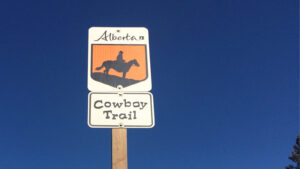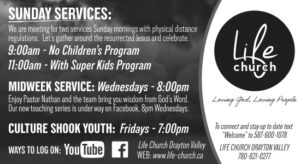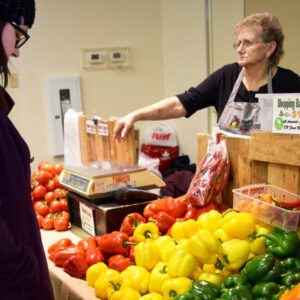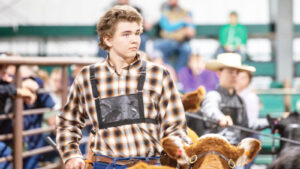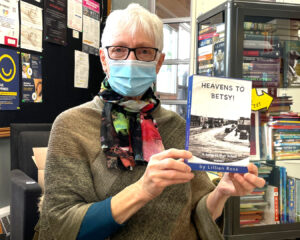Amanda Jeffery, Free Press
Anyone who is 55 years or older will soon be able to access a vehicle to get them to all of their appointments in town, and to some appointments outside of the community.
Drake’s Handi-Bus Services is now being contracted by the Town of Drayton Valley to help those who are older than 55 and those with mobility issues (at any age). Annette Driessen, the General Manager of Community Services for the Town, says they put an RSP out into the community, checking to see if there was anyone who wanted to operate the service, and Drake’s was the one who won.

Drayton Valley Alliance Church
Join us Sunday Mornings 10:30 am Everyone Welcome! Phone: 780-542-6501 Email: office@dvalliance.ca Mailing address: Box

Church of God
Drayton Valley Church of God. Our Worship Services usually include: traditional hymns, praise choruses, and contemporary songs, prayer, scripture, and a sermon.

Emmaus Lutheran Church
A community of faith passionately walking the road of life with the Lord Jesus. Phone: 780-542-5101, Drayton Valley Alberta
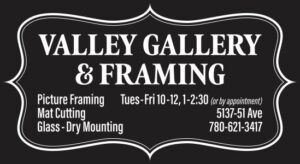
Valley Gallery and Framing
Share on facebook Facebook Share on email Email Share on linkedin LinkedIn Share on whatsapp

B.D. Lock and Key Ltd.
Share on facebook Facebook Share on email Email Share on linkedin LinkedIn Share on whatsapp
“Providing accessible transportation in Drayton Valley has been a priority of Council and I am excited to see this important project come to fruition. Town Council remains committed to offering yearly grants to keep this service operating for the betterment of the community,” says Mayor Michael Doerkson in an email statement.
Amy Newberry, of Drake’s Handi-Bus Services, says the name has historical meaning for the community. “The Drakes were the people of our town that named Drayton Valley because of the Postal Code system, and they were also my great grandparents. It’s a form of leaving a legacy for me,” she said via email.
There are currently an estimated 69 people living completely unsheltered in Drayton Valley. According to a report to council from the Town’s community services department, that number is lower than it was earlier this year. At least 15 people have not returned to the community since the evacuation in early May due to the Buck Creek Fire.
Related statistics show that 153 people have used the shelter pods at some point, although 23 of those have stayed there only once. There are seven people who use the pods almost every night. The Warming Hearts Centre has served 137 individuals at least once, with 21 people using the centre regularly.
Two men have entered addictions treatment in the last month.

Living Spirit United Church
Everyone welcome. Sunday Worship, 10:30 We are residents of Drayton Valley, members and adherents of

Emmaus Lutheran Church
A community of faith passionately walking the road of life with the Lord Jesus. Phone: 780-542-5101, Drayton Valley Alberta

Valley Worship Assembly
Please take your time and discover what is happening at Valley Worship in Drayton Valley.

B.D. Lock and Key Ltd.
Share on facebook Facebook Share on email Email Share on linkedin LinkedIn Share on whatsapp

Drayton Valley Alliance Church
Join us Sunday Mornings 10:30 am Everyone Welcome! Phone: 780-542-6501 Email: office@dvalliance.ca Mailing address: Box
Race returning
The Black Gold Brute Obstacle Race will be back next year. The first ever event was held last month and drew entrants from across Alberta and as far away is Penticton BC. Next year’s date has been set as Sautiday June 8.
Businesses will now have another option for dealing with trespassers thanks to a new program that Enforcement Services have put into place.
Cody Rossing, the manager of enforcement services and emergency management for the Town, says one of the biggest challenges for businesses in the community who were issuing trespass notices is that someone has to attend court in order for the trespassing charge to stick. With the new Trespassing Agent program which comes into place on March 20, businesses who enrol will not have to attend court.
Previously, businesses who contacted the RCMP to report a trespasser had to issue the trespass notices themselves.
For many businesses the process didn’t work well. Larger franchises, like banks, found arranging the issue of a trespass notice and attending court was not logistically feasible. Small business owners, on the other hand, could issue the notice but may have to close their business in order to attend court.
Rossing says there are two different pieces of legislation that speak to trespassing, the Petty Trespass Act and the Trespass to Premises Act.
“Under both of the legislations, the property owner or their agent are required to provide trespass notices, help get people off of their land, and stuff like that,” says Rossing.
The first offence fine under the provincial legislation is normally $600, but it could be up to $10,000. A second offence could have a fine of up to $25,000
The higher fines come into place when the individual ignores the notice and returns to the property. If the trespasser returns three times, the officers can then issue a summons to court. If they fail to attend, a warrant is issued, and at that point if they are found guilty, the higher fines can be given.
Rossing says the program is helping streamline the process for businesses. If they choose to enrol in the program, it will allow peace officers or the RCMP to act as their agent and issue the notices. It also means the business owners won’t have to attend court.
“Court is scary for a lot of people, and we understand that,” says Rossing.
The purpose of the program is to improve the process because officers are continuing to get calls to the same place over and over and business owners or their employees are uncomfortable with the court process. Until now, there hasn’t been any way to address those issues.
“It’s been a lot of work on the back end because there is no follow up process in place and there is no trespass notice being issued,” says Rossing.
He says the hope is that by having this program in place, businesses can sign up and they can begin to address the issue more efficiently.
Several different municipalities in the province have a similar program in place, says Rossing. While developing the program, Rossing did research on other initiatives and reached out to other municipalities that had something similar in place. He says he wanted to be sure that he had everything in place before he announced the program in the community.
There are also checks and balances that have been worked into the program.
“If you’re trespassed from a local business, one of our officers shows up and says you’re trespassed for six months, if you don’t agree with it, you can appeal that process,” says Rossing.
He says there is also the option for the business owners to speak with the officer and reduce the amount of time the individual is trespassed for. In some cases, if the RCMP issue a notice that’s in effect for six months, a business owner may come forward and advocate for the trespasser if the individual doesn’t normally behave in that manner
“They can say, ‘This person is normally a good customer, but there is something going on with him right now. I think maybe a month would be more appropriate,’” says Rossing.
However, it is ultimately the final discretion of the officer.
Once a business is enrolled in the program, they will receive a sticker that they can place in a conspicuous area that is easily visible for officers. If they receive a call, the officer will know that they can issue the notice themselves rather than speaking to the owner and explaining the process that has to take place.
Rossing says enrolment in the program is free, and he encourages businesses to sign up if they are having consistent issues with people loitering or being a nuisance on their property. Those who are interested in enrolling can visit www.draytonvalley.ca/enforcementservices/trespassingagent and fill out the form. They can then email it in to enforcement@draytonvalley.ca or drop it off at the Town office.
There are approximately 187 accidents in town each year within Town limits. That’s according to data from Drayton Valley Enforcement Services.
Cody Rossing, the Manager of Enforcement Services and Emergency Management for the Town, says data from 2016-2023 has helped map out intersections in the community that sees the highest number of collisions. The intersection at 50 Street North and Hwy 22 has had eight collisions, the highest in the community. The second highest number was at the intersection of 50 Street and 50 Avenue.
“Anything along Highway 22, the Town doesn’t have jurisdiction over, pertaining to road designs or changes,” says Rossing.
He says getting the data from the Province regarding collisions along Highway 22 is something they haven’t been able to do before. Now that they have the data they can start mapping out the high incident intersections and starting brainstorming ways they can address some of the problem areas. Rossing says those areas will have more focus from the community peace officers.
Rossing says they are trying to develop strategies on how to reduce collisions in the community on a whole, particularly those that result in fatalities.
“There’s different things we can use like engineering and controls,” says Rossing. “But for enforcement services, how are we strategically educating and enforcing in those areas?”
He says there are a number of factors that can contribute to collisions. Over the past eight years there have been 434 caused from unsafe speeds, 245 were intersection related, 163 that are weather related, 114 from road surface conditions, 51 involving animals, and 417 were from drivers performing improper actions.
With speed being the most prominent cause, enforcement services have been taking action to find out where speeding is most common and increasing patrols. The digital speed signs that were purchased with funds from the Community Safety Committee don’t have cameras on them, but they do record the speed and report that data back to enforcement services.
On March 6, officers intercepted a vehicle driving 102 km per hour in a 50 km zone.
“That vehicle was pulled over, a court summons was issued to the driver to compel them to court. If they don’t attend court a warrant will be issued for them,” says Rossing.
If they are found guilty, they could face a fine of up to $2,000 and/or a license suspension.
Rossing says anyone who is over the speed limit by more than 51 km per hour will face an automatic court summons.
This was not the only incident of speeding. On March 5, the digital speed signs picked up on a vehicle driving 111 km per hour in a 60 km per hour zone. They also pulled over a vehicle going 50 km per hour over the limit that same day.
“That is strictly within the Town of Drayton Valley boundaries,” says Rossing.
There are a number of reports enforcement services can get from the digital signs, including the amount of traffic on a road and the times that see the most traffic. Using this data, enforcement services can ensure they deploy units during the busiest times of the day to the areas where speeding is common.
Like William Shatner, Mike Myers, Wayne Gretzky’s dad and God help us, Celine Dion, here at the Free Press, we are Canadian.
There’s been a lot of talk recently about US ownership of some of this country’s most prominent businesses and institutions. At the Free Press we are certainly not prominent, nor do we want to be institutionalized. But still, it seems like a good time to point out to anyone who’s interested, that we are exactly what we appear to be.
We are 100 percent locally owned. There are no hidden shareholders or outside interests. All of our staff live in either Drayton Valley or Brazeau County, apart from our designer, Brittany. She’s from here, but currently telecommutes from somewhere in British Columbia, which I have to confess, makes me a little jealous sometimes.
What else can I tell you? The Free Press is printed for us by some nice people in St. Albert. The printing press is owned by Great West Newspapers, which is also a Canadian company.
The paper we’re printed on comes from the Alberta Newsprint Corporation in Whitecourt. Incidentally, the paper is made from offcuts and waste from the lumber industry so we’re not cutting down trees to make the paper.
Once the paper has been printed it’s picked up and brought back to town by Drayton Valley’s own Rocket Express. At that point it’s back to us as we deliver it throughout the community.
Now you may be wondering why I’m telling you all this. Would the Americans really be interested in owning a tiny little paper in a small town in Alberta?
Well, you’d be surprised. A good chunk of Canada’s print media is currently in American hands, and that includes a number of community newspapers in this province. Postmedia is 66 percent owned by Chatham Asset Management, a hedge fund based in New Jersey. Who are Postmedia? They are the owners of the National Post, the Calgary Herald, the Edmonton Journal, the Calgary Sun, the Edmonton Sun and a host of other newspapers, both large and small, from coast to coast.
That situation may not be quite as bad as it sounds. I was the editor of the Drayton Valley Western Review (kids, ask your grandparents) for 10 years. During my time there the paper was owned by a succession of large, soulless corporations based in central Canada. They did absolutely nothing to impact the way we covered the news. I barely heard a peep in over a decade. I always suspected that was less to do with high journalistic standards at corporate headquarters, and more down to the fact they were only dimly aware we existed and probably couldn’t find Drayton Valley on a map, but either way the effect was the same.
So corporate ownership, whether it’s American or not, probably isn’t the best thing ever, but it isn’t necessarily fatal to Canadian news.
But I do think there’s an important distinction between a paper like the Free Press and some of the others; and it’s this. If you take out a subscription or buy an advertisement with us you can be confident that your money is staying close to home. And especially these days, that seems like a good investment.
A local auctioneer has chanted his way into the history books after securing himself a first place position at the 2025 Canadian All Around Auctioneer Championship.
Prior to the 2025 CAAAC, Justin Mayer had already earned a trophy at the 2020 Canadian Bid Catching Competition. He is the first to hold a title for both competitions.
Mayer, at 29-years-old, says he’s been participating in the CAAAC for more than a decade. His mentors and many of the auctioneers he grew up listening to have all competed in the competition and some have won.
“It’s a pretty prestigious award,” says Mayer.
A good auctioneer is someone who can present themselves in a professional manner, with confidence in your body language and hand gestures. They have to be well spoken and comfortable with public speaking. The auctioneer chant, which requires rhythm, clarity, and speed to be considered such, is also an important technique that auctioneers must master.
“You should be able to almost dance to an auctioneer’s chant,” says Mayer
When he entered the CAAAC, Mayer participated in two rounds. The preliminary round ruled out everyone except for the top five. Those five then moved onto the final round.
In both rounds, five judges ranked their skills on a scorecard, and the person with the best overall ranking took home the award.
Mayer is not the first member of his family to take home the CAAAC title. His uncle Ron Sekura also held the title, and for Mayer, that makes the win even sweeter.
“He’s passed on, so it’s pretty cool for me to have the title with him,” says Mayer.
As a kid, Mayer was surrounded by some of his biggest mentors in the auctioneering world. His uncle, stepfather Corey Sekura, and grandfather, Wendell Sekura, all encouraged his love of auctioning.
He says he loves the sport because of the high energy atmosphere and the chance to meet people.
“When you’re up on the stand in front of the crowd selling, it’s up to me to present, in lots of cases, people’s livelihoods and their entire life, whether you’re selling a farm or a disbursement sale. It’s up to you, as the auctioneer, to generate excitement and do your homework in front of the crowd in order to bring top dollar for people,” says Mayer.
Over the years, Mayer has met many people and he says he enjoys the connections
“I know somebody from every town,” he says.
Now that he’s taken the title for the CAAAC, he is eligible for the International All Around Auctioneer Championship and from there he can head off to the World Championship.
For many, the decision to go to the international championship would be easy, but Mayer says he’s not sure what he’s going to do.
“I grew up in an auction family, and for me and my family to win this competition was a big deal,” says Mayer. “Now that I’ve won it, I kind of feel like I achieved what I wanted.”
However, Mayer has been receiving encouragement from Rob Bergevin, a Canadian International and Worlds competitor, to go to the International Championship.
“I beat him this year and he’s really trying to convince me to go to the International because he thinks I have a shot at it,” says Mayer.
Mayer’s love of auctioneering resulted in him going to Western College of Auctioneering in Billings, Montana in 2013. Since then, he’s been building up his reputation as an auctioneer across Alberta and British Columbia.
He says his uncle and stepfather were always in his ear, pointing out areas where he could do better and giving him advice to improve his skill.
“Grandpa Wendy was a big factor in that as well,” says Mayer.
For several years, Mayer spent a lot of time travelling to municipalities across the province and British Columbia to local auctions. However, once the pandemic hit, many auction houses opted for online auctions as a way to still run the business while meeting government regulations. Since that time, it’s not uncommon for auctions to be held online.
“But I still travel around,” says Mayer. “I still do lots of auctions. I’m never going to stop. It’s too exciting.”
Over the years, Mayer has worked for Team Auctions, as well as auctioning off classic cars. He also works for a lot of charity auctions.
When his children were younger, they struggled with the amount of time that Mayer was away. Now that they’re older, he says they appreciate it more. His daughter has even been asking for lessons, and has been practicing reading off a list of numbers that she has on her wall.
Mayer says he’s grateful to everyone for their support and encouragement over the years.
“I’m tremendously thankful to my mom, my dad, the Sekura family, my wife and my kids. They have all been there for me. They’ve all shaped me,” says Mayer. “Probably my biggest influence in all of it was my Uncle Ron, and my dad, Corey. They really shaped me and supported me.”
Members of local indigenous groups are working toward opening a charter school with the goal of offering students an education that goes beyond academics.
Charlene Bearhead, a member of the board for the Roots of Resilience not-for-profit society, says the group is applying to the Minister of Education to be able to open a charter school in Drayton Valley, with a goal of opening in September.
The society is hosting an information night on February 13 from 5-7:30 p.m. at the Holiday Inn Express.
Bearhead says her 40 years of working in education has made it clear that the system is failing children and staff as human beings.
“I’m always a big believer in doing the best you can to try to work with what exists already and do what you can to help guide that,” says Bearhead.
She worked within the system, and recently served as a school board trustee, but she says people weren’t ready to progress with changes she feels need to be made.
The goal of opening the charter school is to offer a learning experience that encompasses a child’s entire wellbeing, including mental and spiritual health, along with teaching Alberta’s curriculum. While the students will learn from methods that indigenous people have always used for passing on knowledge, Bearhead says the school isn’t just open to indigenous children. Any child in the area from Kindergarten to grade 12 will be welcome to attend.
One thing that Bearhead wants the public to be aware of regarding charter schools is that they are still public schools. Roots of Resilience will be funded in the same manner that Wild Rose School Division and the St. Thomas Aquinas Roman Catholic School Division are.
“One lady said to me, ‘This sounds so amazing Charlene, but I really struggle with anything that takes away from public schools,’” says Bearhead. “I had to say to her ‘This is public education. This is public school.’”
She says there are only provisions for charter schools in Alberta. Charter schools receive the same funding for facilities, transportations, and other expenses, and the same requirements to follow the Alberta curriculum and the Education Act. Just like any other public school, parents do not have to pay extra to enrol their children in a charter school.
“But they are intended to be schools of choice,” says Bearhead. “They give parents and kids a choice in their education.”
However, charter schools are not without controversy. According to the website of Alberta Teachers’ Association, “there is only one pot of money for schools in Alberta. When money is diverted to private and charter schools, it leaves public schools in a funding shortfall.”
Bearhead says charter schools have to offer a unique approach to education that isn’t available in the geographic area. Bearhead says it’s important to the RoR society to define the holistic success for the school, which means the students will be doing better in body, mind, and soul, as well as academically.
She says that pushing people hard to do well academically while ignoring all other aspects of the student’s progress doesn’t work well. For Bearhead, it’s important for educators to meet the students where they’re at, value them as human beings, offer them a safe environment, and offer opportunities for the students to see themselves reflected in what is being taught.
Along with the regular curriculum, Bearhead says they plan to offer language programs for those who are interested in learning the language of their ancestors to help those students connect with their heritage.
Wendy Snow, the Interim District Captain in the Otipemisiwak Metis Government for District Eight and member of the RoR society, says she feels her own children would have benefitted from what the proposed school will be offering.
Snow says she has two children as well as a niece that she is the guardian of. With all three of them going to school in Drayton, she says they went to almost every school in the community.
“I found that it was very lacking as far as teaching to our culture,” says Snow.
She says every year she would fill out the demographic forms, indicating that her children were indigenous, knowing that the school division would get additional funding for those students.
“I found that all of the funding in the Wild Rose School Division went to Rocky Mountain House,” she says. “All the programming, all the culture stuff, everything went to Rocky Mountain House.”
Like Bearhead, Snow wanted to work with the system and try to help improve things. She ran twice for school board trustee, but did not get elected.
“I’ve always wanted to see more funding and programming and culture stuff in this area, just like there is in Rocky Mountain House,” says Snow.
Bearhead says the RoR school will resonate with indigenous children.
“An indigenous pedagogy, or approach to education, is about physical, mental, social, emotional, and spiritual [well-being]. Whatever that means to you. Everyone is indigenous to somewhere,” says Bearhead.
She says public charter schools are smaller and have unique approaches to education.
“They are actually intended to be models for how education could happen in any or all public schools,” she says.
Bearhead says when the students see themselves reflected in the content they’re learning, they have a better chance of relating to it and absorbing it.
By making the students the centre of the system, educators can focus on the whole child, not just the content they’re supposed to be learning. She says each student has different strengths, weaknesses, interests, and paths. In their school, they plan to help students excel at their strengths, offer support for their weaknesses, and encourage their interests and plans.
Another important part of education is offering the students a safe space.
“If kids are terrified, if kids are being bullied, if kids don’t feel safe, how can they focus on learning?” says Bearhead. “That’s just human instinct. That’s survival.”
She says if students are feeling ostracized, alienated, or left out, it’s more challenging for them to learn.
Roots of Resilience will also offer hands-on learning for students. This experiential learning will be land-based, which means there will be more of a balance between indoor and outdoor learning. She says there are many different areas of the curriculum that can be taught outdoors beyond science and physical education.
“For me, when you do something, rather than just read about it or hear about it, it becomes ingrained in you,” she says.
Snow says she wants to see children in the area have an opportunity to choose an education that best suits them.
“I think it just gives them a great basis for success later on in life,” says Snow.
Grade 4: Let's learn about the Newspaper
Introduction
My name is Mrs. Brandy Fredrickson (I am Ruth’s mom) and I own the Drayton Valley and District Free Press newspaper. I used to be a reporter a the Drayton Valley Western Review…20 years ago. In this job I met some amazing people and learned so much about my community. My co-workers from 20 years ago are now my staff and we still have a lot of fun writing about Drayton Valley.
Question: What is one thing (person, place, team) that makes Drayton Valley a special place for you?
What is a newspaper?
A newspaper is a collection of stories, photos, advertisements, columns and letters that represent the collective news and mood of your community at a given point in time.
Types of Newspaper
National Newspapers: National Post, Globe and Mail
Provincial Newspapers: Edmonton Journals, Calgary Herald
Regional/Local Newspapers: That Us! Often these papers are locally owned, family started and some are 60-100 years old.
Other Regional:
Activity 1: Get to know the newspaper
Activity: Seek and Find
What you need: 1 piece of paper, 1 pencil, 1 Free Press Newspaper
- Get into groups of 4
- On a piece of paper write down numbers 1-5
- Find these 5 things in the paper
- Bring your answers up to me and shake my hand when you’re done
- Two Fastest teams get a treat
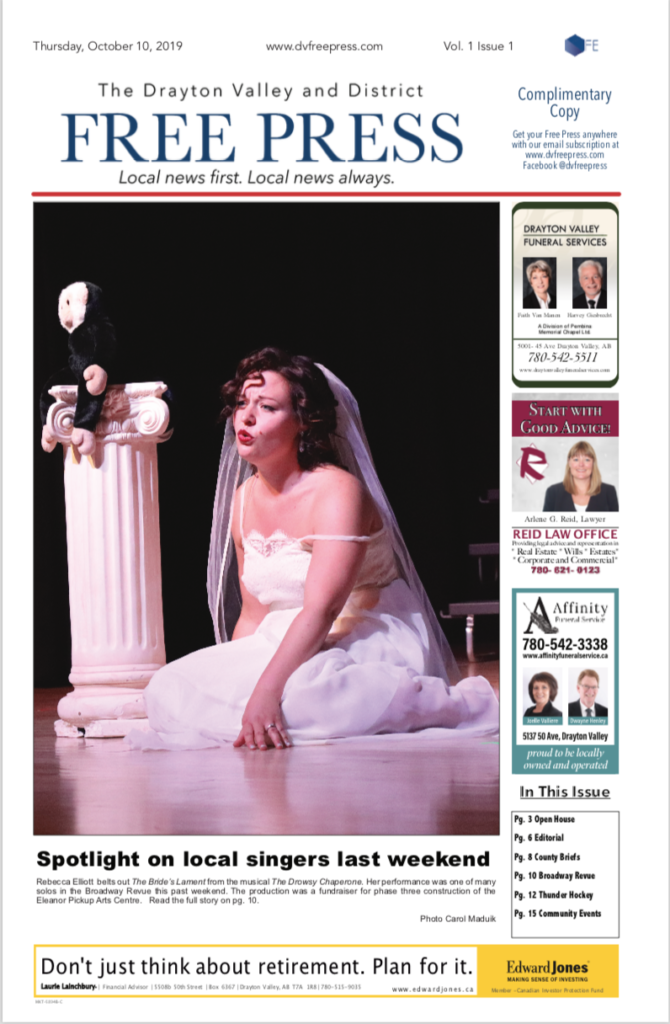
And Go....
- What is the tagline under the “Free Press” masthead on pg. 1?
- Who wrote the letter about the ski hill (name)?
- Who took the photo on pg. 11?
- Name one business in the business directory?
- Who is the editor of newspaper (name)?
Layout Discussion:
How is a paper the same as a magazine? How is the newspaper different than a book?
Getting in front of eyeballs: How is the newspaper distributed?
Making sure the newspaper is seen is a big part of having a local newspaper. Distribution channels helps to make this happen. The Free Press has 3 distribution channels.
1. Email Subscriptions
2. Canada Post mail subscriptions
3. Free pickup in retail locations
Discussion:
How does your teacher share information with you? And how do you share information with your parents?
Activity: Watch Video of the printing press
Fact Checking and Credibility
“Thou shalt not lie.”
Discussion: Why do you think it is important not to lie?
Credibility is the foundation of any newspaper. If your readers cannot trust what you are writing you won’t have an audience for long. This is why our editor spend much of his time fact checking, and rechecking facts in the stories we publish.
Activity 2: Is it True?
In your groups look at your newspaper and tell me if this headline is true.
Is this headline true?
- Town Council passes interim budget
- Volunteer database up and running
- Town billing changed despite strike
Activity 3: Examine a story
Mrs. Fredrickson Read: “Councillor Responds to Allegations”
What are some facts in this story that would need to be checked?
Activity 4: "Telephone " fact checking
- Get into 2 long lines
- Teacher select 2 people to be “fact checkers”
- Beginning at the start whisper message into your neighbours ear, and continue down the line.
- Once the message gets to a fact checker, the fact checker will give a thumbs up to continue telephone if the message is correct or go back to the start of the line to restart the telephone if the message is incorrect.
Here are some sources we use to check facts:
Call people to confirm information
Voice record interviews
Use multiple sources
Discussion
What ways can you check the facts for school projects or school gossip?
Jobs at a newspaper
Running a newspaper requires a team. Each person contributes to the success of the paper. Below are some jobs that people have to making a successful local newspaper.
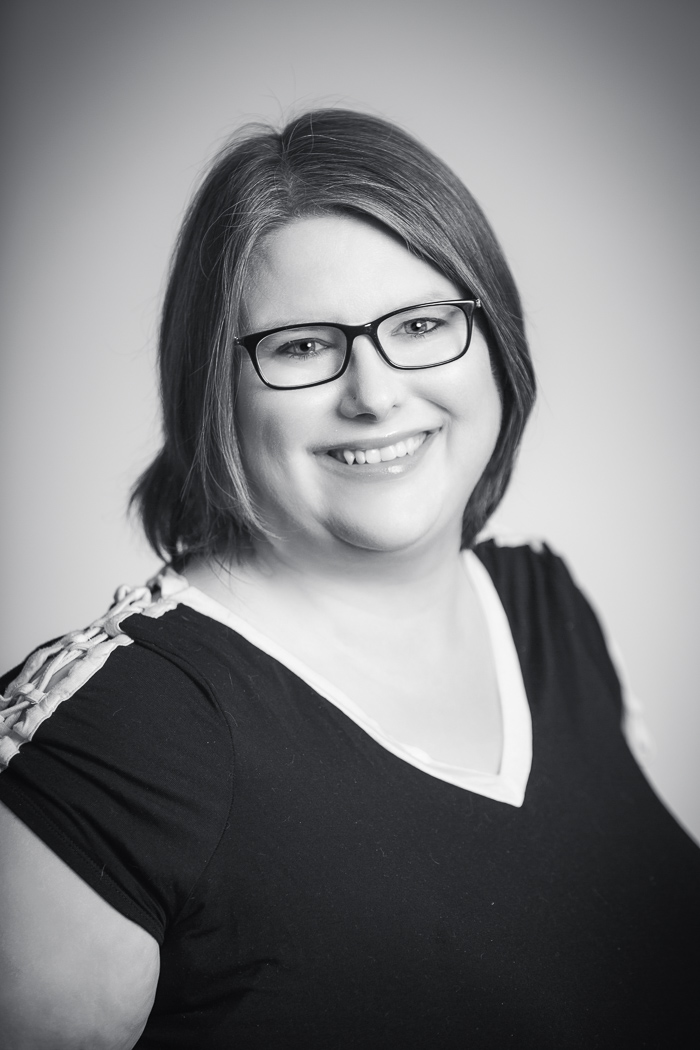


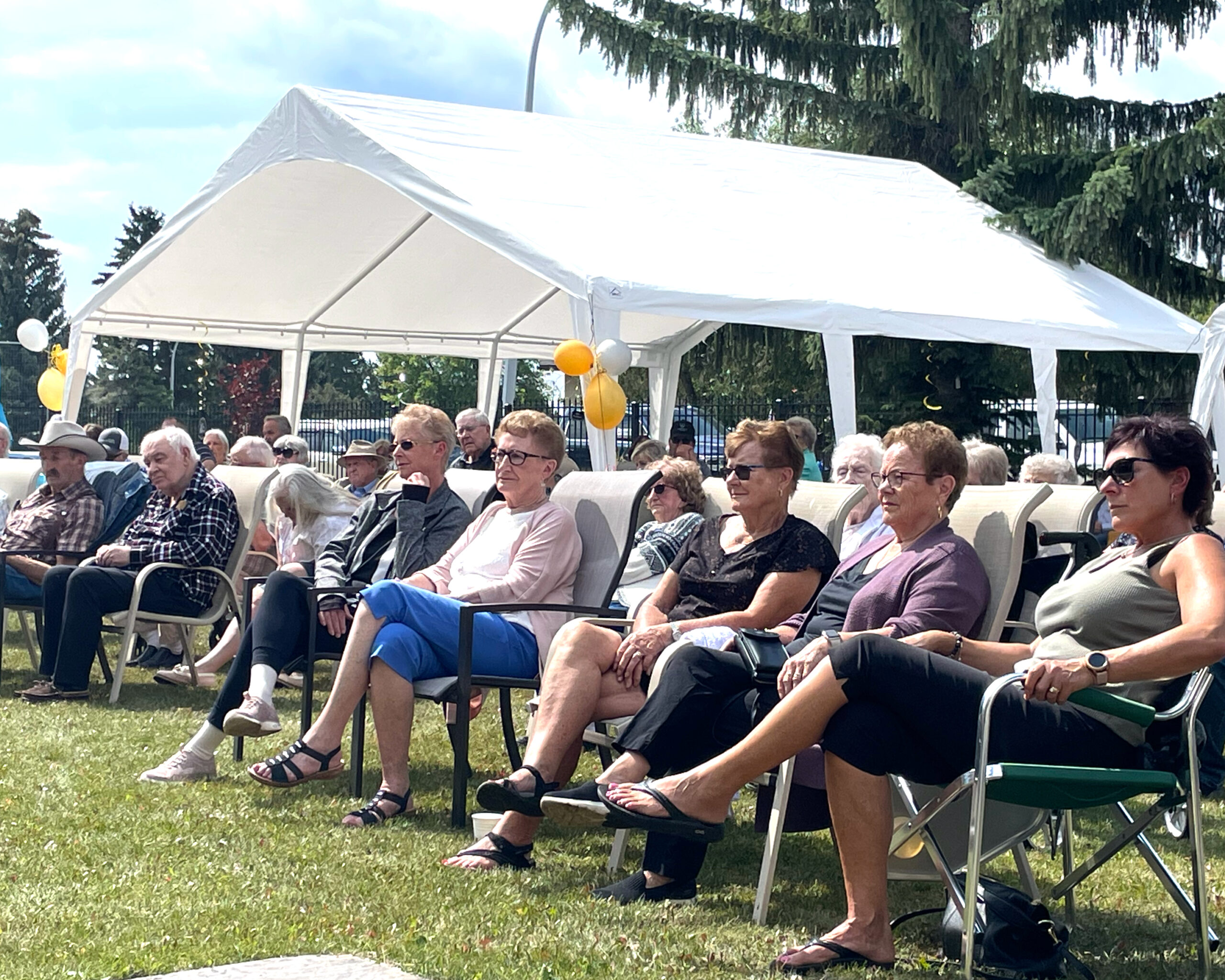
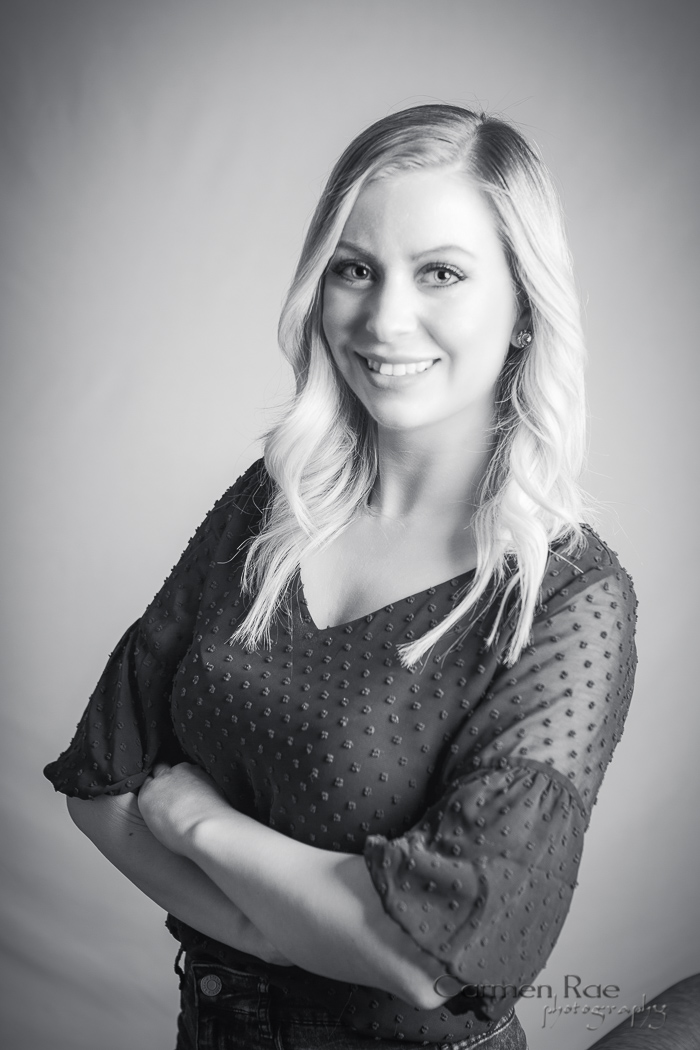
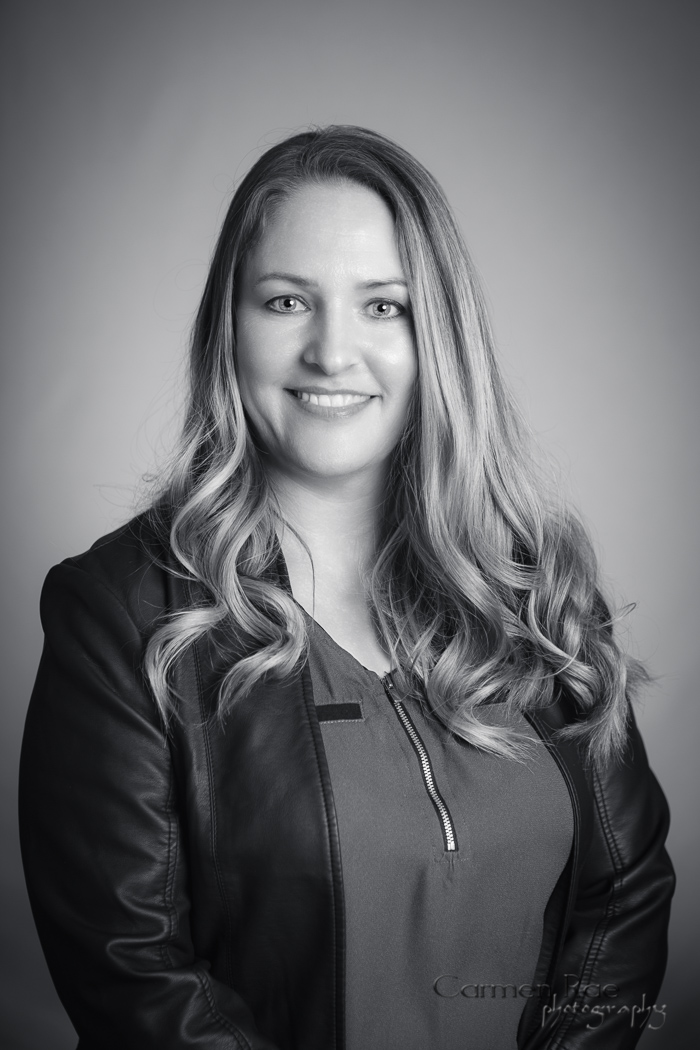
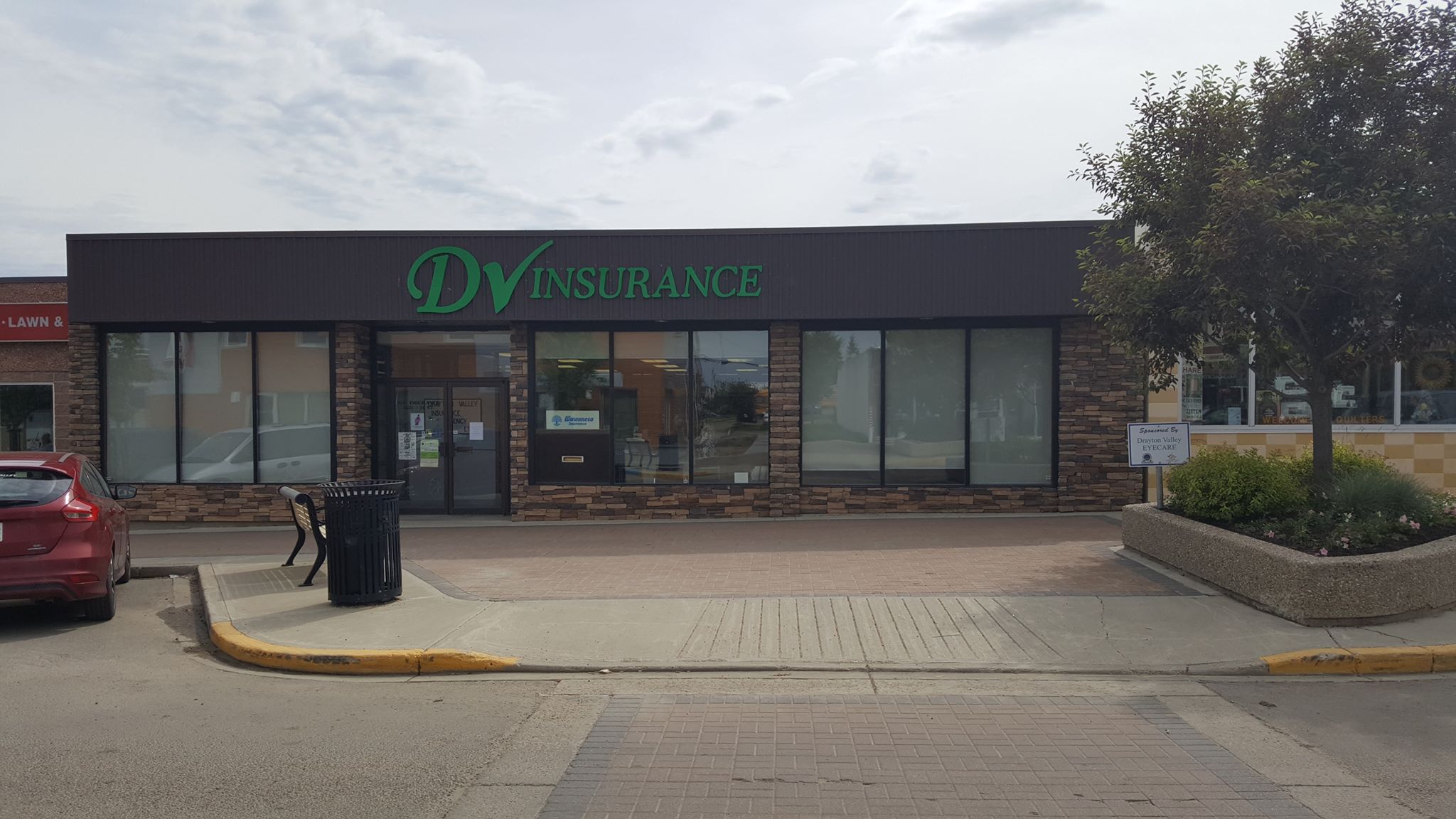
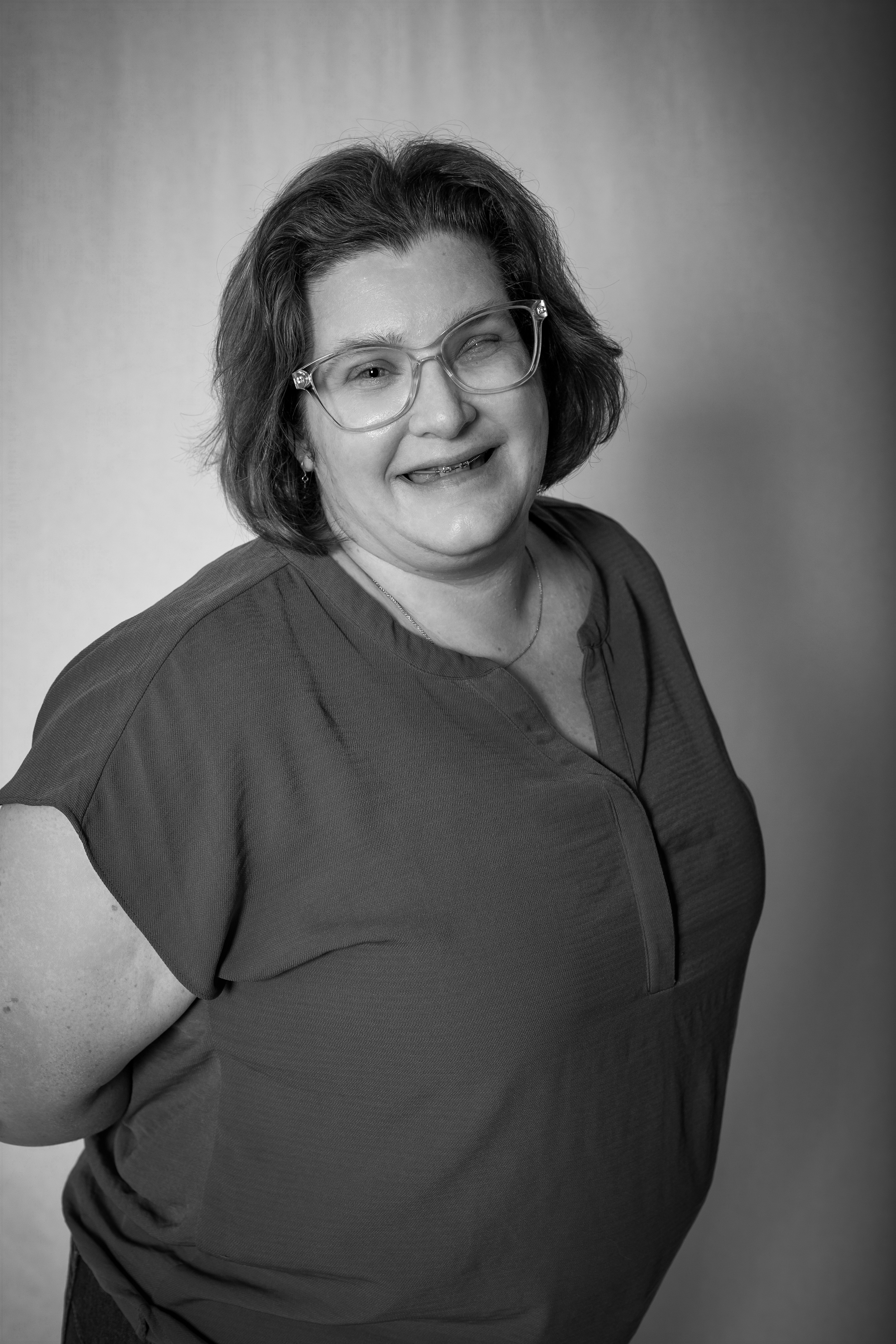
Activity 5: Who does what?
In groups of 4 go to and PAGE 9 of the newspaper and label who did what.
E = Editor
R = Reporter
GD = Graphic Designer
C = Columnist
S = Sales
Activity 6: Conducting an Interview Speed Style
Interviewing people is a major job of a newspaper reporter. To conduct a good interview you need these three elements:
1. Questions; open ended
2. Paper and pen, or recorder
3. Listening ears and eyes
Open Ended Questions
Open ended questions are questions that get people talking. The are not yes or no questions. They are “How,” “Who,” and “What” questions.
Example: How did you feel winning the basketball game? What inspired you to write that story?
Recording Tool
Never go to a newspaper interview without a recording device; Paper, pen, voice recorder or texting device. Reporters often quote and paraphrase their subjects and accuracy is key.
Quote: “I love to teach,” Kormysh said.
Paraphrase: Kormysh said she loves teahing.
Active listening
Active listening means you are listening with your ears (close your mouth), your eyes and your body language. The key to a good interview is to get the other person talking this means you have to stop talking.
Speed Interview Game
1. Take out a piece of paper.
2. Write down 1 open ended question you can ask a classmates
4. When I say go, find a classmate and ask your question. Listen.
5. Record their answer.
6. Find someone new when I say “Switch”
7. Discussion: Report on what you learned? How accurate was your reporting?
Final Activity 7: Photo and Feedback
Take the handout and answer the following question.
A. What is one thing I learned about the newspaper?
B. Gather for a Group Photo
Road works
Reconstruction on a stretch of 50 Avenue began earlier this week and is expected to continue until the end of October. The project will see the replacement and installation of new storm, sanitary, and water infrastructure, as well as roadway, sidewalk, and curb reconstruction. There may be road closures and detours in place between 43 Street and Becket Road and parking restrictions elsewhere.
Meanwhile crack sealing on Drayton Valley’s roads is almost completed for this season. 30,000 linear meters of cracks were repaired on 50 Street from the derricks to the intersection by Boston Pizza. Next up is line painting, which is expected to get under way by the end of this week. Pothole filling is ongoing.

New trespassing program helps businesses
The Drayton Valley business community can now streamline trespassing enforcement with a new program, reducing court visits and empowering officers to issue notices on their behalf.

Technology bring collisions into focus
High-collision intersections in Drayton Valley identified; enforcement targets speeders on 50 St & Hwy 22. Safety measures increase.

What you see is what you get
Award winning columnist Graham Long on the Canadian ownership of the Drayton Valley Free Press newspaper.

Local auctioneer takes the championship
Jason Mayer of Drayton Valley wins the 2025 Canadian Auctioneer Championship with Team Auctions, making history in auctioneering excellence.
With more than 60 years of business under its belt, the Drayton Valley Bakery is making a move.
The building it originally started in has a plaque, stating the business was established in 1955. For many years the owners were June and Harold Hesselbarth. Later, the reins of the Bakery were handed over to Trish and Jack Wiersma. They remained the owners until March 2021, when today’s owners, Jackie Young and Eric Bergen, took over.
Though the business is moving, it’s not going far. The original building stands at 5029 51 Avenue, the new location is at 5129 51 Street.

Valley Worship Assembly
Please take your time and discover what is happening at Valley Worship in Drayton Valley.

Valley Gallery and Framing
Share on facebook Facebook Share on email Email Share on linkedin LinkedIn Share on whatsapp

Drayton Valley Insurance
Share on facebook Facebook Share on email Email Share on linkedin LinkedIn Share on whatsapp
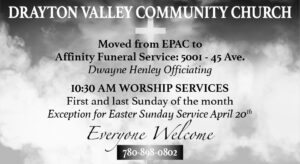
Drayton Valley Community Church
DV Community Church. Located at Affinity Funeral Services, officiated by Dwayne Henley.

B.D. Lock and Key Ltd.
Share on facebook Facebook Share on email Email Share on linkedin LinkedIn Share on whatsapp
Both Young and Bergen say they understand the heritage this business has in the community. They plan to make no changes to the most important aspects of the Bakery: the recipes.
“In essence, nothing’s changed. We respect heritage, so there are lots that June and Harold had recipes for, and that hasn’t changed since 1955,” says Bergen. “There was stuff that Jack and Trish brought to the table, and that hasn’t changed, either.”
All of the doughnut recipes, cake recipes, bread recipes, and other goodies remain the same. The only change was a tweak to the cookie recipe, which has led to an increase in cookie sales.
Young says everything is done by hand, unlike many businesses in today’s market. They build the doughnuts from scratch. “Someone has to touch them every step of the way,” she says.
“We do our own glazing, icing and everything,” says Bergen.
The duo also retained the previous staff, some of whom have been there for 30 years. “It’s literally the same staff that’s been making it,” says Bergen. “In essence, the product hasn’t changed.”
Businesses will now have another option for dealing with trespassers thanks to a new program that Enforcement Services have put into place.
Cody Rossing, the manager of enforcement services and emergency management for the Town, says one of the biggest challenges for businesses in the community who were issuing trespass notices is that someone has to attend court in order for the trespassing charge to stick. With the new Trespassing Agent program which comes into place on March 20, businesses who enrol will not have to attend court.
Previously, businesses who contacted the RCMP to report a trespasser had to issue the trespass notices themselves.
For many businesses the process didn’t work well. Larger franchises, like banks, found arranging the issue of a trespass notice and attending court was not logistically feasible. Small business owners, on the other hand, could issue the notice but may have to close their business in order to attend court.
Rossing says there are two different pieces of legislation that speak to trespassing, the Petty Trespass Act and the Trespass to Premises Act.
“Under both of the legislations, the property owner or their agent are required to provide trespass notices, help get people off of their land, and stuff like that,” says Rossing.
The first offence fine under the provincial legislation is normally $600, but it could be up to $10,000. A second offence could have a fine of up to $25,000
The higher fines come into place when the individual ignores the notice and returns to the property. If the trespasser returns three times, the officers can then issue a summons to court. If they fail to attend, a warrant is issued, and at that point if they are found guilty, the higher fines can be given.
Rossing says the program is helping streamline the process for businesses. If they choose to enrol in the program, it will allow peace officers or the RCMP to act as their agent and issue the notices. It also means the business owners won’t have to attend court.
“Court is scary for a lot of people, and we understand that,” says Rossing.
The purpose of the program is to improve the process because officers are continuing to get calls to the same place over and over and business owners or their employees are uncomfortable with the court process. Until now, there hasn’t been any way to address those issues.
“It’s been a lot of work on the back end because there is no follow up process in place and there is no trespass notice being issued,” says Rossing.
He says the hope is that by having this program in place, businesses can sign up and they can begin to address the issue more efficiently.
Several different municipalities in the province have a similar program in place, says Rossing. While developing the program, Rossing did research on other initiatives and reached out to other municipalities that had something similar in place. He says he wanted to be sure that he had everything in place before he announced the program in the community.
There are also checks and balances that have been worked into the program.
“If you’re trespassed from a local business, one of our officers shows up and says you’re trespassed for six months, if you don’t agree with it, you can appeal that process,” says Rossing.
He says there is also the option for the business owners to speak with the officer and reduce the amount of time the individual is trespassed for. In some cases, if the RCMP issue a notice that’s in effect for six months, a business owner may come forward and advocate for the trespasser if the individual doesn’t normally behave in that manner
“They can say, ‘This person is normally a good customer, but there is something going on with him right now. I think maybe a month would be more appropriate,’” says Rossing.
However, it is ultimately the final discretion of the officer.
Once a business is enrolled in the program, they will receive a sticker that they can place in a conspicuous area that is easily visible for officers. If they receive a call, the officer will know that they can issue the notice themselves rather than speaking to the owner and explaining the process that has to take place.
Rossing says enrolment in the program is free, and he encourages businesses to sign up if they are having consistent issues with people loitering or being a nuisance on their property. Those who are interested in enrolling can visit www.draytonvalley.ca/enforcementservices/trespassingagent and fill out the form. They can then email it in to enforcement@draytonvalley.ca or drop it off at the Town office.
There are approximately 187 accidents in town each year within Town limits. That’s according to data from Drayton Valley Enforcement Services.
Cody Rossing, the Manager of Enforcement Services and Emergency Management for the Town, says data from 2016-2023 has helped map out intersections in the community that sees the highest number of collisions. The intersection at 50 Street North and Hwy 22 has had eight collisions, the highest in the community. The second highest number was at the intersection of 50 Street and 50 Avenue.
“Anything along Highway 22, the Town doesn’t have jurisdiction over, pertaining to road designs or changes,” says Rossing.
He says getting the data from the Province regarding collisions along Highway 22 is something they haven’t been able to do before. Now that they have the data they can start mapping out the high incident intersections and starting brainstorming ways they can address some of the problem areas. Rossing says those areas will have more focus from the community peace officers.
Rossing says they are trying to develop strategies on how to reduce collisions in the community on a whole, particularly those that result in fatalities.
“There’s different things we can use like engineering and controls,” says Rossing. “But for enforcement services, how are we strategically educating and enforcing in those areas?”
He says there are a number of factors that can contribute to collisions. Over the past eight years there have been 434 caused from unsafe speeds, 245 were intersection related, 163 that are weather related, 114 from road surface conditions, 51 involving animals, and 417 were from drivers performing improper actions.
With speed being the most prominent cause, enforcement services have been taking action to find out where speeding is most common and increasing patrols. The digital speed signs that were purchased with funds from the Community Safety Committee don’t have cameras on them, but they do record the speed and report that data back to enforcement services.
On March 6, officers intercepted a vehicle driving 102 km per hour in a 50 km zone.
“That vehicle was pulled over, a court summons was issued to the driver to compel them to court. If they don’t attend court a warrant will be issued for them,” says Rossing.
If they are found guilty, they could face a fine of up to $2,000 and/or a license suspension.
Rossing says anyone who is over the speed limit by more than 51 km per hour will face an automatic court summons.
This was not the only incident of speeding. On March 5, the digital speed signs picked up on a vehicle driving 111 km per hour in a 60 km per hour zone. They also pulled over a vehicle going 50 km per hour over the limit that same day.
“That is strictly within the Town of Drayton Valley boundaries,” says Rossing.
There are a number of reports enforcement services can get from the digital signs, including the amount of traffic on a road and the times that see the most traffic. Using this data, enforcement services can ensure they deploy units during the busiest times of the day to the areas where speeding is common.
Like William Shatner, Mike Myers, Wayne Gretzky’s dad and God help us, Celine Dion, here at the Free Press, we are Canadian.
There’s been a lot of talk recently about US ownership of some of this country’s most prominent businesses and institutions. At the Free Press we are certainly not prominent, nor do we want to be institutionalized. But still, it seems like a good time to point out to anyone who’s interested, that we are exactly what we appear to be.
We are 100 percent locally owned. There are no hidden shareholders or outside interests. All of our staff live in either Drayton Valley or Brazeau County, apart from our designer, Brittany. She’s from here, but currently telecommutes from somewhere in British Columbia, which I have to confess, makes me a little jealous sometimes.
What else can I tell you? The Free Press is printed for us by some nice people in St. Albert. The printing press is owned by Great West Newspapers, which is also a Canadian company.
The paper we’re printed on comes from the Alberta Newsprint Corporation in Whitecourt. Incidentally, the paper is made from offcuts and waste from the lumber industry so we’re not cutting down trees to make the paper.
Once the paper has been printed it’s picked up and brought back to town by Drayton Valley’s own Rocket Express. At that point it’s back to us as we deliver it throughout the community.
Now you may be wondering why I’m telling you all this. Would the Americans really be interested in owning a tiny little paper in a small town in Alberta?
Well, you’d be surprised. A good chunk of Canada’s print media is currently in American hands, and that includes a number of community newspapers in this province. Postmedia is 66 percent owned by Chatham Asset Management, a hedge fund based in New Jersey. Who are Postmedia? They are the owners of the National Post, the Calgary Herald, the Edmonton Journal, the Calgary Sun, the Edmonton Sun and a host of other newspapers, both large and small, from coast to coast.
That situation may not be quite as bad as it sounds. I was the editor of the Drayton Valley Western Review (kids, ask your grandparents) for 10 years. During my time there the paper was owned by a succession of large, soulless corporations based in central Canada. They did absolutely nothing to impact the way we covered the news. I barely heard a peep in over a decade. I always suspected that was less to do with high journalistic standards at corporate headquarters, and more down to the fact they were only dimly aware we existed and probably couldn’t find Drayton Valley on a map, but either way the effect was the same.
So corporate ownership, whether it’s American or not, probably isn’t the best thing ever, but it isn’t necessarily fatal to Canadian news.
But I do think there’s an important distinction between a paper like the Free Press and some of the others; and it’s this. If you take out a subscription or buy an advertisement with us you can be confident that your money is staying close to home. And especially these days, that seems like a good investment.
A local auctioneer has chanted his way into the history books after securing himself a first place position at the 2025 Canadian All Around Auctioneer Championship.
Prior to the 2025 CAAAC, Justin Mayer had already earned a trophy at the 2020 Canadian Bid Catching Competition. He is the first to hold a title for both competitions.
Mayer, at 29-years-old, says he’s been participating in the CAAAC for more than a decade. His mentors and many of the auctioneers he grew up listening to have all competed in the competition and some have won.
“It’s a pretty prestigious award,” says Mayer.
A good auctioneer is someone who can present themselves in a professional manner, with confidence in your body language and hand gestures. They have to be well spoken and comfortable with public speaking. The auctioneer chant, which requires rhythm, clarity, and speed to be considered such, is also an important technique that auctioneers must master.
“You should be able to almost dance to an auctioneer’s chant,” says Mayer
When he entered the CAAAC, Mayer participated in two rounds. The preliminary round ruled out everyone except for the top five. Those five then moved onto the final round.
In both rounds, five judges ranked their skills on a scorecard, and the person with the best overall ranking took home the award.
Mayer is not the first member of his family to take home the CAAAC title. His uncle Ron Sekura also held the title, and for Mayer, that makes the win even sweeter.
“He’s passed on, so it’s pretty cool for me to have the title with him,” says Mayer.
As a kid, Mayer was surrounded by some of his biggest mentors in the auctioneering world. His uncle, stepfather Corey Sekura, and grandfather, Wendell Sekura, all encouraged his love of auctioning.
He says he loves the sport because of the high energy atmosphere and the chance to meet people.
“When you’re up on the stand in front of the crowd selling, it’s up to me to present, in lots of cases, people’s livelihoods and their entire life, whether you’re selling a farm or a disbursement sale. It’s up to you, as the auctioneer, to generate excitement and do your homework in front of the crowd in order to bring top dollar for people,” says Mayer.
Over the years, Mayer has met many people and he says he enjoys the connections
“I know somebody from every town,” he says.
Now that he’s taken the title for the CAAAC, he is eligible for the International All Around Auctioneer Championship and from there he can head off to the World Championship.
For many, the decision to go to the international championship would be easy, but Mayer says he’s not sure what he’s going to do.
“I grew up in an auction family, and for me and my family to win this competition was a big deal,” says Mayer. “Now that I’ve won it, I kind of feel like I achieved what I wanted.”
However, Mayer has been receiving encouragement from Rob Bergevin, a Canadian International and Worlds competitor, to go to the International Championship.
“I beat him this year and he’s really trying to convince me to go to the International because he thinks I have a shot at it,” says Mayer.
Mayer’s love of auctioneering resulted in him going to Western College of Auctioneering in Billings, Montana in 2013. Since then, he’s been building up his reputation as an auctioneer across Alberta and British Columbia.
He says his uncle and stepfather were always in his ear, pointing out areas where he could do better and giving him advice to improve his skill.
“Grandpa Wendy was a big factor in that as well,” says Mayer.
For several years, Mayer spent a lot of time travelling to municipalities across the province and British Columbia to local auctions. However, once the pandemic hit, many auction houses opted for online auctions as a way to still run the business while meeting government regulations. Since that time, it’s not uncommon for auctions to be held online.
“But I still travel around,” says Mayer. “I still do lots of auctions. I’m never going to stop. It’s too exciting.”
Over the years, Mayer has worked for Team Auctions, as well as auctioning off classic cars. He also works for a lot of charity auctions.
When his children were younger, they struggled with the amount of time that Mayer was away. Now that they’re older, he says they appreciate it more. His daughter has even been asking for lessons, and has been practicing reading off a list of numbers that she has on her wall.
Mayer says he’s grateful to everyone for their support and encouragement over the years.
“I’m tremendously thankful to my mom, my dad, the Sekura family, my wife and my kids. They have all been there for me. They’ve all shaped me,” says Mayer. “Probably my biggest influence in all of it was my Uncle Ron, and my dad, Corey. They really shaped me and supported me.”
Members of local indigenous groups are working toward opening a charter school with the goal of offering students an education that goes beyond academics.
Charlene Bearhead, a member of the board for the Roots of Resilience not-for-profit society, says the group is applying to the Minister of Education to be able to open a charter school in Drayton Valley, with a goal of opening in September.
The society is hosting an information night on February 13 from 5-7:30 p.m. at the Holiday Inn Express.
Bearhead says her 40 years of working in education has made it clear that the system is failing children and staff as human beings.
“I’m always a big believer in doing the best you can to try to work with what exists already and do what you can to help guide that,” says Bearhead.
She worked within the system, and recently served as a school board trustee, but she says people weren’t ready to progress with changes she feels need to be made.
The goal of opening the charter school is to offer a learning experience that encompasses a child’s entire wellbeing, including mental and spiritual health, along with teaching Alberta’s curriculum. While the students will learn from methods that indigenous people have always used for passing on knowledge, Bearhead says the school isn’t just open to indigenous children. Any child in the area from Kindergarten to grade 12 will be welcome to attend.
One thing that Bearhead wants the public to be aware of regarding charter schools is that they are still public schools. Roots of Resilience will be funded in the same manner that Wild Rose School Division and the St. Thomas Aquinas Roman Catholic School Division are.
“One lady said to me, ‘This sounds so amazing Charlene, but I really struggle with anything that takes away from public schools,’” says Bearhead. “I had to say to her ‘This is public education. This is public school.’”
She says there are only provisions for charter schools in Alberta. Charter schools receive the same funding for facilities, transportations, and other expenses, and the same requirements to follow the Alberta curriculum and the Education Act. Just like any other public school, parents do not have to pay extra to enrol their children in a charter school.
“But they are intended to be schools of choice,” says Bearhead. “They give parents and kids a choice in their education.”
However, charter schools are not without controversy. According to the website of Alberta Teachers’ Association, “there is only one pot of money for schools in Alberta. When money is diverted to private and charter schools, it leaves public schools in a funding shortfall.”
Bearhead says charter schools have to offer a unique approach to education that isn’t available in the geographic area. Bearhead says it’s important to the RoR society to define the holistic success for the school, which means the students will be doing better in body, mind, and soul, as well as academically.
She says that pushing people hard to do well academically while ignoring all other aspects of the student’s progress doesn’t work well. For Bearhead, it’s important for educators to meet the students where they’re at, value them as human beings, offer them a safe environment, and offer opportunities for the students to see themselves reflected in what is being taught.
Along with the regular curriculum, Bearhead says they plan to offer language programs for those who are interested in learning the language of their ancestors to help those students connect with their heritage.
Wendy Snow, the Interim District Captain in the Otipemisiwak Metis Government for District Eight and member of the RoR society, says she feels her own children would have benefitted from what the proposed school will be offering.
Snow says she has two children as well as a niece that she is the guardian of. With all three of them going to school in Drayton, she says they went to almost every school in the community.
“I found that it was very lacking as far as teaching to our culture,” says Snow.
She says every year she would fill out the demographic forms, indicating that her children were indigenous, knowing that the school division would get additional funding for those students.
“I found that all of the funding in the Wild Rose School Division went to Rocky Mountain House,” she says. “All the programming, all the culture stuff, everything went to Rocky Mountain House.”
Like Bearhead, Snow wanted to work with the system and try to help improve things. She ran twice for school board trustee, but did not get elected.
“I’ve always wanted to see more funding and programming and culture stuff in this area, just like there is in Rocky Mountain House,” says Snow.
Bearhead says the RoR school will resonate with indigenous children.
“An indigenous pedagogy, or approach to education, is about physical, mental, social, emotional, and spiritual [well-being]. Whatever that means to you. Everyone is indigenous to somewhere,” says Bearhead.
She says public charter schools are smaller and have unique approaches to education.
“They are actually intended to be models for how education could happen in any or all public schools,” she says.
Bearhead says when the students see themselves reflected in the content they’re learning, they have a better chance of relating to it and absorbing it.
By making the students the centre of the system, educators can focus on the whole child, not just the content they’re supposed to be learning. She says each student has different strengths, weaknesses, interests, and paths. In their school, they plan to help students excel at their strengths, offer support for their weaknesses, and encourage their interests and plans.
Another important part of education is offering the students a safe space.
“If kids are terrified, if kids are being bullied, if kids don’t feel safe, how can they focus on learning?” says Bearhead. “That’s just human instinct. That’s survival.”
She says if students are feeling ostracized, alienated, or left out, it’s more challenging for them to learn.
Roots of Resilience will also offer hands-on learning for students. This experiential learning will be land-based, which means there will be more of a balance between indoor and outdoor learning. She says there are many different areas of the curriculum that can be taught outdoors beyond science and physical education.
“For me, when you do something, rather than just read about it or hear about it, it becomes ingrained in you,” she says.
Snow says she wants to see children in the area have an opportunity to choose an education that best suits them.
“I think it just gives them a great basis for success later on in life,” says Snow.
Grade 4: Let's learn about the Newspaper
Introduction
My name is Mrs. Brandy Fredrickson (I am Ruth’s mom) and I own the Drayton Valley and District Free Press newspaper. I used to be a reporter a the Drayton Valley Western Review…20 years ago. In this job I met some amazing people and learned so much about my community. My co-workers from 20 years ago are now my staff and we still have a lot of fun writing about Drayton Valley.
Question: What is one thing (person, place, team) that makes Drayton Valley a special place for you?
What is a newspaper?
A newspaper is a collection of stories, photos, advertisements, columns and letters that represent the collective news and mood of your community at a given point in time.
Types of Newspaper
National Newspapers: National Post, Globe and Mail
Provincial Newspapers: Edmonton Journals, Calgary Herald
Regional/Local Newspapers: That Us! Often these papers are locally owned, family started and some are 60-100 years old.
Other Regional:
Activity 1: Get to know the newspaper
Activity: Seek and Find
What you need: 1 piece of paper, 1 pencil, 1 Free Press Newspaper
- Get into groups of 4
- On a piece of paper write down numbers 1-5
- Find these 5 things in the paper
- Bring your answers up to me and shake my hand when you’re done
- Two Fastest teams get a treat

And Go....
- What is the tagline under the “Free Press” masthead on pg. 1?
- Who wrote the letter about the ski hill (name)?
- Who took the photo on pg. 11?
- Name one business in the business directory?
- Who is the editor of newspaper (name)?
Layout Discussion:
How is a paper the same as a magazine? How is the newspaper different than a book?
Getting in front of eyeballs: How is the newspaper distributed?
Making sure the newspaper is seen is a big part of having a local newspaper. Distribution channels helps to make this happen. The Free Press has 3 distribution channels.
1. Email Subscriptions
2. Canada Post mail subscriptions
3. Free pickup in retail locations
Discussion:
How does your teacher share information with you? And how do you share information with your parents?
Activity: Watch Video of the printing press
Fact Checking and Credibility
“Thou shalt not lie.”
Discussion: Why do you think it is important not to lie?
Credibility is the foundation of any newspaper. If your readers cannot trust what you are writing you won’t have an audience for long. This is why our editor spend much of his time fact checking, and rechecking facts in the stories we publish.
Activity 2: Is it True?
In your groups look at your newspaper and tell me if this headline is true.
Is this headline true?
- Town Council passes interim budget
- Volunteer database up and running
- Town billing changed despite strike
Activity 3: Examine a story
Mrs. Fredrickson Read: “Councillor Responds to Allegations”
What are some facts in this story that would need to be checked?
Activity 4: "Telephone " fact checking
- Get into 2 long lines
- Teacher select 2 people to be “fact checkers”
- Beginning at the start whisper message into your neighbours ear, and continue down the line.
- Once the message gets to a fact checker, the fact checker will give a thumbs up to continue telephone if the message is correct or go back to the start of the line to restart the telephone if the message is incorrect.
Here are some sources we use to check facts:
Call people to confirm information
Voice record interviews
Use multiple sources
Discussion
What ways can you check the facts for school projects or school gossip?
Jobs at a newspaper
Running a newspaper requires a team. Each person contributes to the success of the paper. Below are some jobs that people have to making a successful local newspaper.








Activity 5: Who does what?
In groups of 4 go to and PAGE 9 of the newspaper and label who did what.
E = Editor
R = Reporter
GD = Graphic Designer
C = Columnist
S = Sales
Activity 6: Conducting an Interview Speed Style
Interviewing people is a major job of a newspaper reporter. To conduct a good interview you need these three elements:
1. Questions; open ended
2. Paper and pen, or recorder
3. Listening ears and eyes
Open Ended Questions
Open ended questions are questions that get people talking. The are not yes or no questions. They are “How,” “Who,” and “What” questions.
Example: How did you feel winning the basketball game? What inspired you to write that story?
Recording Tool
Never go to a newspaper interview without a recording device; Paper, pen, voice recorder or texting device. Reporters often quote and paraphrase their subjects and accuracy is key.
Quote: “I love to teach,” Kormysh said.
Paraphrase: Kormysh said she loves teahing.
Active listening
Active listening means you are listening with your ears (close your mouth), your eyes and your body language. The key to a good interview is to get the other person talking this means you have to stop talking.
Speed Interview Game
1. Take out a piece of paper.
2. Write down 1 open ended question you can ask a classmates
4. When I say go, find a classmate and ask your question. Listen.
5. Record their answer.
6. Find someone new when I say “Switch”
7. Discussion: Report on what you learned? How accurate was your reporting?
Final Activity 7: Photo and Feedback
Take the handout and answer the following question.
A. What is one thing I learned about the newspaper?
B. Gather for a Group Photo
Bergen says he’s also encouraging the staff to be creative. Employees with favourite or new recipes can approach Bergen and Young about it. If the item would be cost-effective to make and is popular with customers, it will stay on the menu.
Young and Bergen say the reason they chose to make the move was because of the condition of the building. There were many issues with the building, and much of it isn’t up to code as it exists today.
Bergen says he has no doubt it has always been up to code in the past, but as the business changed hands and an inspector came in, those issues had to be dealt with. “That building was up to code in 1955, but because we’re in a new building we have to abide by the current code.” After weighing their options, the two decided moving would be the best use of their money.
Young says one of the perks of the new location is that it’s double the square footage of the previous building. “We want to have a smoothie bar, we want to have a coffee bar, and we want to do tabletop games eventually,” she says.
Right now, Bergen says they have already started inviting the community into their space. They’ve partnered with tutors, giving them a space to work with students in a central location.
As most would expect, the move wasn’t all smooth sailing. Getting a loan was a struggle for the couple, so they ended up using their own money, along with donations from friends and family. They also had to order new equipment because some of the older stuff was in disrepair.
Bergen commended Jack and Harold for their ability to make small repairs and get by with the equipment they had. However, Young and Bergen decided to replace a lot of the items that were beyond repair. However, some of the equipment from the kitchens was moved over.
Young and Bergen have also drawn national attention to the Bakery with their new website. Since they’ve begun posting on social media, they say they’ve had customers drive hours out of their way to visit them.
While the Bakery was shut down from June 17-22, they planned to have a soft opening on June 23 if everything went to plan. Their grand opening will take place in July, though they haven’t yet picked a date. Anyone wanting to know the date can follow the Drayton Valley Bakery on Facebook or visit their website www.draytonvalleybakery.ca.

New trespassing program helps businesses
The Drayton Valley business community can now streamline trespassing enforcement with a new program, reducing court visits and empowering officers to issue notices on their behalf.

Technology bring collisions into focus
High-collision intersections in Drayton Valley identified; enforcement targets speeders on 50 St & Hwy 22. Safety measures increase.

What you see is what you get
Award winning columnist Graham Long on the Canadian ownership of the Drayton Valley Free Press newspaper.

Local auctioneer takes the championship
Jason Mayer of Drayton Valley wins the 2025 Canadian Auctioneer Championship with Team Auctions, making history in auctioneering excellence.
After coming close to closure last year Drayton Valley’s Toastmasters group is enjoying a new lease of life.
“I am happy to report we are alive, actively recruiting new Toastmasters and recently received two awards,” says Leah Sanderson, past president of the Derrick Toastmasters.
The first of those awards is for public relations, the second is for Toastmaster of the Year, which was won by Sanderson herself.

Drayton Valley Insurance
Share on facebook Facebook Share on email Email Share on linkedin LinkedIn Share on whatsapp

Ralcomm Communications
The Ralcomm Group provides communication devices for individuals and businesses. We specialize in technology that

Drayton Valley Community Church
DV Community Church. Located at Affinity Funeral Services, officiated by Dwayne Henley.
Dr. Chris Birchall Dentistry
Share on facebook Facebook Share on email Email Share on linkedin LinkedIn Share on whatsapp

Living Spirit United Church
Everyone welcome. Sunday Worship, 10:30 We are residents of Drayton Valley, members and adherents of
“The Toastmaster of the Year Award is presented to recognize and honour that Toastmaster in District 99 who achieves and maintains the highest standard of excellence as a member of Toastmasters International,” said Kathy Pors, Division A Director. “Sanderson’s dedication, resiliency, integrity, perseverance and communication achievements are but some of the reasons she is receiving the Toastmaster of the Year Award for 2021-2022.”
Toastmasters International is a nonprofit educational organization that operates clubs worldwide for the purpose of promoting communication, public speaking and leadership. The Derrick Toastmasters have been active in Drayton Valley for 32 years. Last year declining membership left the group’s future in doubt, however Sanderson says things have since improved dramatically.
“Developing leadership skills is not an easy road. What I initially thought was the end of a 32-year charter was actually the beginning,” she says. “I faced and overcame perceived and actual obstacles. As a leader I learned to use being uncomfortable, overwhelmed, at times deflated and defeated to bust through and beyond to that one next step…Each foot forward meant another step towards saving our club and its 32 year charter.”
Businesses will now have another option for dealing with trespassers thanks to a new program that Enforcement Services have put into place.
Cody Rossing, the manager of enforcement services and emergency management for the Town, says one of the biggest challenges for businesses in the community who were issuing trespass notices is that someone has to attend court in order for the trespassing charge to stick. With the new Trespassing Agent program which comes into place on March 20, businesses who enrol will not have to attend court.
Previously, businesses who contacted the RCMP to report a trespasser had to issue the trespass notices themselves.
For many businesses the process didn’t work well. Larger franchises, like banks, found arranging the issue of a trespass notice and attending court was not logistically feasible. Small business owners, on the other hand, could issue the notice but may have to close their business in order to attend court.
Rossing says there are two different pieces of legislation that speak to trespassing, the Petty Trespass Act and the Trespass to Premises Act.
“Under both of the legislations, the property owner or their agent are required to provide trespass notices, help get people off of their land, and stuff like that,” says Rossing.
The first offence fine under the provincial legislation is normally $600, but it could be up to $10,000. A second offence could have a fine of up to $25,000
The higher fines come into place when the individual ignores the notice and returns to the property. If the trespasser returns three times, the officers can then issue a summons to court. If they fail to attend, a warrant is issued, and at that point if they are found guilty, the higher fines can be given.
Rossing says the program is helping streamline the process for businesses. If they choose to enrol in the program, it will allow peace officers or the RCMP to act as their agent and issue the notices. It also means the business owners won’t have to attend court.
“Court is scary for a lot of people, and we understand that,” says Rossing.
The purpose of the program is to improve the process because officers are continuing to get calls to the same place over and over and business owners or their employees are uncomfortable with the court process. Until now, there hasn’t been any way to address those issues.
“It’s been a lot of work on the back end because there is no follow up process in place and there is no trespass notice being issued,” says Rossing.
He says the hope is that by having this program in place, businesses can sign up and they can begin to address the issue more efficiently.
Several different municipalities in the province have a similar program in place, says Rossing. While developing the program, Rossing did research on other initiatives and reached out to other municipalities that had something similar in place. He says he wanted to be sure that he had everything in place before he announced the program in the community.
There are also checks and balances that have been worked into the program.
“If you’re trespassed from a local business, one of our officers shows up and says you’re trespassed for six months, if you don’t agree with it, you can appeal that process,” says Rossing.
He says there is also the option for the business owners to speak with the officer and reduce the amount of time the individual is trespassed for. In some cases, if the RCMP issue a notice that’s in effect for six months, a business owner may come forward and advocate for the trespasser if the individual doesn’t normally behave in that manner
“They can say, ‘This person is normally a good customer, but there is something going on with him right now. I think maybe a month would be more appropriate,’” says Rossing.
However, it is ultimately the final discretion of the officer.
Once a business is enrolled in the program, they will receive a sticker that they can place in a conspicuous area that is easily visible for officers. If they receive a call, the officer will know that they can issue the notice themselves rather than speaking to the owner and explaining the process that has to take place.
Rossing says enrolment in the program is free, and he encourages businesses to sign up if they are having consistent issues with people loitering or being a nuisance on their property. Those who are interested in enrolling can visit www.draytonvalley.ca/enforcementservices/trespassingagent and fill out the form. They can then email it in to enforcement@draytonvalley.ca or drop it off at the Town office.
There are approximately 187 accidents in town each year within Town limits. That’s according to data from Drayton Valley Enforcement Services.
Cody Rossing, the Manager of Enforcement Services and Emergency Management for the Town, says data from 2016-2023 has helped map out intersections in the community that sees the highest number of collisions. The intersection at 50 Street North and Hwy 22 has had eight collisions, the highest in the community. The second highest number was at the intersection of 50 Street and 50 Avenue.
“Anything along Highway 22, the Town doesn’t have jurisdiction over, pertaining to road designs or changes,” says Rossing.
He says getting the data from the Province regarding collisions along Highway 22 is something they haven’t been able to do before. Now that they have the data they can start mapping out the high incident intersections and starting brainstorming ways they can address some of the problem areas. Rossing says those areas will have more focus from the community peace officers.
Rossing says they are trying to develop strategies on how to reduce collisions in the community on a whole, particularly those that result in fatalities.
“There’s different things we can use like engineering and controls,” says Rossing. “But for enforcement services, how are we strategically educating and enforcing in those areas?”
He says there are a number of factors that can contribute to collisions. Over the past eight years there have been 434 caused from unsafe speeds, 245 were intersection related, 163 that are weather related, 114 from road surface conditions, 51 involving animals, and 417 were from drivers performing improper actions.
With speed being the most prominent cause, enforcement services have been taking action to find out where speeding is most common and increasing patrols. The digital speed signs that were purchased with funds from the Community Safety Committee don’t have cameras on them, but they do record the speed and report that data back to enforcement services.
On March 6, officers intercepted a vehicle driving 102 km per hour in a 50 km zone.
“That vehicle was pulled over, a court summons was issued to the driver to compel them to court. If they don’t attend court a warrant will be issued for them,” says Rossing.
If they are found guilty, they could face a fine of up to $2,000 and/or a license suspension.
Rossing says anyone who is over the speed limit by more than 51 km per hour will face an automatic court summons.
This was not the only incident of speeding. On March 5, the digital speed signs picked up on a vehicle driving 111 km per hour in a 60 km per hour zone. They also pulled over a vehicle going 50 km per hour over the limit that same day.
“That is strictly within the Town of Drayton Valley boundaries,” says Rossing.
There are a number of reports enforcement services can get from the digital signs, including the amount of traffic on a road and the times that see the most traffic. Using this data, enforcement services can ensure they deploy units during the busiest times of the day to the areas where speeding is common.
Like William Shatner, Mike Myers, Wayne Gretzky’s dad and God help us, Celine Dion, here at the Free Press, we are Canadian.
There’s been a lot of talk recently about US ownership of some of this country’s most prominent businesses and institutions. At the Free Press we are certainly not prominent, nor do we want to be institutionalized. But still, it seems like a good time to point out to anyone who’s interested, that we are exactly what we appear to be.
We are 100 percent locally owned. There are no hidden shareholders or outside interests. All of our staff live in either Drayton Valley or Brazeau County, apart from our designer, Brittany. She’s from here, but currently telecommutes from somewhere in British Columbia, which I have to confess, makes me a little jealous sometimes.
What else can I tell you? The Free Press is printed for us by some nice people in St. Albert. The printing press is owned by Great West Newspapers, which is also a Canadian company.
The paper we’re printed on comes from the Alberta Newsprint Corporation in Whitecourt. Incidentally, the paper is made from offcuts and waste from the lumber industry so we’re not cutting down trees to make the paper.
Once the paper has been printed it’s picked up and brought back to town by Drayton Valley’s own Rocket Express. At that point it’s back to us as we deliver it throughout the community.
Now you may be wondering why I’m telling you all this. Would the Americans really be interested in owning a tiny little paper in a small town in Alberta?
Well, you’d be surprised. A good chunk of Canada’s print media is currently in American hands, and that includes a number of community newspapers in this province. Postmedia is 66 percent owned by Chatham Asset Management, a hedge fund based in New Jersey. Who are Postmedia? They are the owners of the National Post, the Calgary Herald, the Edmonton Journal, the Calgary Sun, the Edmonton Sun and a host of other newspapers, both large and small, from coast to coast.
That situation may not be quite as bad as it sounds. I was the editor of the Drayton Valley Western Review (kids, ask your grandparents) for 10 years. During my time there the paper was owned by a succession of large, soulless corporations based in central Canada. They did absolutely nothing to impact the way we covered the news. I barely heard a peep in over a decade. I always suspected that was less to do with high journalistic standards at corporate headquarters, and more down to the fact they were only dimly aware we existed and probably couldn’t find Drayton Valley on a map, but either way the effect was the same.
So corporate ownership, whether it’s American or not, probably isn’t the best thing ever, but it isn’t necessarily fatal to Canadian news.
But I do think there’s an important distinction between a paper like the Free Press and some of the others; and it’s this. If you take out a subscription or buy an advertisement with us you can be confident that your money is staying close to home. And especially these days, that seems like a good investment.
A local auctioneer has chanted his way into the history books after securing himself a first place position at the 2025 Canadian All Around Auctioneer Championship.
Prior to the 2025 CAAAC, Justin Mayer had already earned a trophy at the 2020 Canadian Bid Catching Competition. He is the first to hold a title for both competitions.
Mayer, at 29-years-old, says he’s been participating in the CAAAC for more than a decade. His mentors and many of the auctioneers he grew up listening to have all competed in the competition and some have won.
“It’s a pretty prestigious award,” says Mayer.
A good auctioneer is someone who can present themselves in a professional manner, with confidence in your body language and hand gestures. They have to be well spoken and comfortable with public speaking. The auctioneer chant, which requires rhythm, clarity, and speed to be considered such, is also an important technique that auctioneers must master.
“You should be able to almost dance to an auctioneer’s chant,” says Mayer
When he entered the CAAAC, Mayer participated in two rounds. The preliminary round ruled out everyone except for the top five. Those five then moved onto the final round.
In both rounds, five judges ranked their skills on a scorecard, and the person with the best overall ranking took home the award.
Mayer is not the first member of his family to take home the CAAAC title. His uncle Ron Sekura also held the title, and for Mayer, that makes the win even sweeter.
“He’s passed on, so it’s pretty cool for me to have the title with him,” says Mayer.
As a kid, Mayer was surrounded by some of his biggest mentors in the auctioneering world. His uncle, stepfather Corey Sekura, and grandfather, Wendell Sekura, all encouraged his love of auctioning.
He says he loves the sport because of the high energy atmosphere and the chance to meet people.
“When you’re up on the stand in front of the crowd selling, it’s up to me to present, in lots of cases, people’s livelihoods and their entire life, whether you’re selling a farm or a disbursement sale. It’s up to you, as the auctioneer, to generate excitement and do your homework in front of the crowd in order to bring top dollar for people,” says Mayer.
Over the years, Mayer has met many people and he says he enjoys the connections
“I know somebody from every town,” he says.
Now that he’s taken the title for the CAAAC, he is eligible for the International All Around Auctioneer Championship and from there he can head off to the World Championship.
For many, the decision to go to the international championship would be easy, but Mayer says he’s not sure what he’s going to do.
“I grew up in an auction family, and for me and my family to win this competition was a big deal,” says Mayer. “Now that I’ve won it, I kind of feel like I achieved what I wanted.”
However, Mayer has been receiving encouragement from Rob Bergevin, a Canadian International and Worlds competitor, to go to the International Championship.
“I beat him this year and he’s really trying to convince me to go to the International because he thinks I have a shot at it,” says Mayer.
Mayer’s love of auctioneering resulted in him going to Western College of Auctioneering in Billings, Montana in 2013. Since then, he’s been building up his reputation as an auctioneer across Alberta and British Columbia.
He says his uncle and stepfather were always in his ear, pointing out areas where he could do better and giving him advice to improve his skill.
“Grandpa Wendy was a big factor in that as well,” says Mayer.
For several years, Mayer spent a lot of time travelling to municipalities across the province and British Columbia to local auctions. However, once the pandemic hit, many auction houses opted for online auctions as a way to still run the business while meeting government regulations. Since that time, it’s not uncommon for auctions to be held online.
“But I still travel around,” says Mayer. “I still do lots of auctions. I’m never going to stop. It’s too exciting.”
Over the years, Mayer has worked for Team Auctions, as well as auctioning off classic cars. He also works for a lot of charity auctions.
When his children were younger, they struggled with the amount of time that Mayer was away. Now that they’re older, he says they appreciate it more. His daughter has even been asking for lessons, and has been practicing reading off a list of numbers that she has on her wall.
Mayer says he’s grateful to everyone for their support and encouragement over the years.
“I’m tremendously thankful to my mom, my dad, the Sekura family, my wife and my kids. They have all been there for me. They’ve all shaped me,” says Mayer. “Probably my biggest influence in all of it was my Uncle Ron, and my dad, Corey. They really shaped me and supported me.”
Members of local indigenous groups are working toward opening a charter school with the goal of offering students an education that goes beyond academics.
Charlene Bearhead, a member of the board for the Roots of Resilience not-for-profit society, says the group is applying to the Minister of Education to be able to open a charter school in Drayton Valley, with a goal of opening in September.
The society is hosting an information night on February 13 from 5-7:30 p.m. at the Holiday Inn Express.
Bearhead says her 40 years of working in education has made it clear that the system is failing children and staff as human beings.
“I’m always a big believer in doing the best you can to try to work with what exists already and do what you can to help guide that,” says Bearhead.
She worked within the system, and recently served as a school board trustee, but she says people weren’t ready to progress with changes she feels need to be made.
The goal of opening the charter school is to offer a learning experience that encompasses a child’s entire wellbeing, including mental and spiritual health, along with teaching Alberta’s curriculum. While the students will learn from methods that indigenous people have always used for passing on knowledge, Bearhead says the school isn’t just open to indigenous children. Any child in the area from Kindergarten to grade 12 will be welcome to attend.
One thing that Bearhead wants the public to be aware of regarding charter schools is that they are still public schools. Roots of Resilience will be funded in the same manner that Wild Rose School Division and the St. Thomas Aquinas Roman Catholic School Division are.
“One lady said to me, ‘This sounds so amazing Charlene, but I really struggle with anything that takes away from public schools,’” says Bearhead. “I had to say to her ‘This is public education. This is public school.’”
She says there are only provisions for charter schools in Alberta. Charter schools receive the same funding for facilities, transportations, and other expenses, and the same requirements to follow the Alberta curriculum and the Education Act. Just like any other public school, parents do not have to pay extra to enrol their children in a charter school.
“But they are intended to be schools of choice,” says Bearhead. “They give parents and kids a choice in their education.”
However, charter schools are not without controversy. According to the website of Alberta Teachers’ Association, “there is only one pot of money for schools in Alberta. When money is diverted to private and charter schools, it leaves public schools in a funding shortfall.”
Bearhead says charter schools have to offer a unique approach to education that isn’t available in the geographic area. Bearhead says it’s important to the RoR society to define the holistic success for the school, which means the students will be doing better in body, mind, and soul, as well as academically.
She says that pushing people hard to do well academically while ignoring all other aspects of the student’s progress doesn’t work well. For Bearhead, it’s important for educators to meet the students where they’re at, value them as human beings, offer them a safe environment, and offer opportunities for the students to see themselves reflected in what is being taught.
Along with the regular curriculum, Bearhead says they plan to offer language programs for those who are interested in learning the language of their ancestors to help those students connect with their heritage.
Wendy Snow, the Interim District Captain in the Otipemisiwak Metis Government for District Eight and member of the RoR society, says she feels her own children would have benefitted from what the proposed school will be offering.
Snow says she has two children as well as a niece that she is the guardian of. With all three of them going to school in Drayton, she says they went to almost every school in the community.
“I found that it was very lacking as far as teaching to our culture,” says Snow.
She says every year she would fill out the demographic forms, indicating that her children were indigenous, knowing that the school division would get additional funding for those students.
“I found that all of the funding in the Wild Rose School Division went to Rocky Mountain House,” she says. “All the programming, all the culture stuff, everything went to Rocky Mountain House.”
Like Bearhead, Snow wanted to work with the system and try to help improve things. She ran twice for school board trustee, but did not get elected.
“I’ve always wanted to see more funding and programming and culture stuff in this area, just like there is in Rocky Mountain House,” says Snow.
Bearhead says the RoR school will resonate with indigenous children.
“An indigenous pedagogy, or approach to education, is about physical, mental, social, emotional, and spiritual [well-being]. Whatever that means to you. Everyone is indigenous to somewhere,” says Bearhead.
She says public charter schools are smaller and have unique approaches to education.
“They are actually intended to be models for how education could happen in any or all public schools,” she says.
Bearhead says when the students see themselves reflected in the content they’re learning, they have a better chance of relating to it and absorbing it.
By making the students the centre of the system, educators can focus on the whole child, not just the content they’re supposed to be learning. She says each student has different strengths, weaknesses, interests, and paths. In their school, they plan to help students excel at their strengths, offer support for their weaknesses, and encourage their interests and plans.
Another important part of education is offering the students a safe space.
“If kids are terrified, if kids are being bullied, if kids don’t feel safe, how can they focus on learning?” says Bearhead. “That’s just human instinct. That’s survival.”
She says if students are feeling ostracized, alienated, or left out, it’s more challenging for them to learn.
Roots of Resilience will also offer hands-on learning for students. This experiential learning will be land-based, which means there will be more of a balance between indoor and outdoor learning. She says there are many different areas of the curriculum that can be taught outdoors beyond science and physical education.
“For me, when you do something, rather than just read about it or hear about it, it becomes ingrained in you,” she says.
Snow says she wants to see children in the area have an opportunity to choose an education that best suits them.
“I think it just gives them a great basis for success later on in life,” says Snow.
Grade 4: Let's learn about the Newspaper
Introduction
My name is Mrs. Brandy Fredrickson (I am Ruth’s mom) and I own the Drayton Valley and District Free Press newspaper. I used to be a reporter a the Drayton Valley Western Review…20 years ago. In this job I met some amazing people and learned so much about my community. My co-workers from 20 years ago are now my staff and we still have a lot of fun writing about Drayton Valley.
Question: What is one thing (person, place, team) that makes Drayton Valley a special place for you?
What is a newspaper?
A newspaper is a collection of stories, photos, advertisements, columns and letters that represent the collective news and mood of your community at a given point in time.
Types of Newspaper
National Newspapers: National Post, Globe and Mail
Provincial Newspapers: Edmonton Journals, Calgary Herald
Regional/Local Newspapers: That Us! Often these papers are locally owned, family started and some are 60-100 years old.
Other Regional:
Activity 1: Get to know the newspaper
Activity: Seek and Find
What you need: 1 piece of paper, 1 pencil, 1 Free Press Newspaper
- Get into groups of 4
- On a piece of paper write down numbers 1-5
- Find these 5 things in the paper
- Bring your answers up to me and shake my hand when you’re done
- Two Fastest teams get a treat

And Go....
- What is the tagline under the “Free Press” masthead on pg. 1?
- Who wrote the letter about the ski hill (name)?
- Who took the photo on pg. 11?
- Name one business in the business directory?
- Who is the editor of newspaper (name)?
Layout Discussion:
How is a paper the same as a magazine? How is the newspaper different than a book?
Getting in front of eyeballs: How is the newspaper distributed?
Making sure the newspaper is seen is a big part of having a local newspaper. Distribution channels helps to make this happen. The Free Press has 3 distribution channels.
1. Email Subscriptions
2. Canada Post mail subscriptions
3. Free pickup in retail locations
Discussion:
How does your teacher share information with you? And how do you share information with your parents?
Activity: Watch Video of the printing press
Fact Checking and Credibility
“Thou shalt not lie.”
Discussion: Why do you think it is important not to lie?
Credibility is the foundation of any newspaper. If your readers cannot trust what you are writing you won’t have an audience for long. This is why our editor spend much of his time fact checking, and rechecking facts in the stories we publish.
Activity 2: Is it True?
In your groups look at your newspaper and tell me if this headline is true.
Is this headline true?
- Town Council passes interim budget
- Volunteer database up and running
- Town billing changed despite strike
Activity 3: Examine a story
Mrs. Fredrickson Read: “Councillor Responds to Allegations”
What are some facts in this story that would need to be checked?
Activity 4: "Telephone " fact checking
- Get into 2 long lines
- Teacher select 2 people to be “fact checkers”
- Beginning at the start whisper message into your neighbours ear, and continue down the line.
- Once the message gets to a fact checker, the fact checker will give a thumbs up to continue telephone if the message is correct or go back to the start of the line to restart the telephone if the message is incorrect.
Here are some sources we use to check facts:
Call people to confirm information
Voice record interviews
Use multiple sources
Discussion
What ways can you check the facts for school projects or school gossip?
Jobs at a newspaper
Running a newspaper requires a team. Each person contributes to the success of the paper. Below are some jobs that people have to making a successful local newspaper.








Activity 5: Who does what?
In groups of 4 go to and PAGE 9 of the newspaper and label who did what.
E = Editor
R = Reporter
GD = Graphic Designer
C = Columnist
S = Sales
Activity 6: Conducting an Interview Speed Style
Interviewing people is a major job of a newspaper reporter. To conduct a good interview you need these three elements:
1. Questions; open ended
2. Paper and pen, or recorder
3. Listening ears and eyes
Open Ended Questions
Open ended questions are questions that get people talking. The are not yes or no questions. They are “How,” “Who,” and “What” questions.
Example: How did you feel winning the basketball game? What inspired you to write that story?
Recording Tool
Never go to a newspaper interview without a recording device; Paper, pen, voice recorder or texting device. Reporters often quote and paraphrase their subjects and accuracy is key.
Quote: “I love to teach,” Kormysh said.
Paraphrase: Kormysh said she loves teahing.
Active listening
Active listening means you are listening with your ears (close your mouth), your eyes and your body language. The key to a good interview is to get the other person talking this means you have to stop talking.
Speed Interview Game
1. Take out a piece of paper.
2. Write down 1 open ended question you can ask a classmates
4. When I say go, find a classmate and ask your question. Listen.
5. Record their answer.
6. Find someone new when I say “Switch”
7. Discussion: Report on what you learned? How accurate was your reporting?
Final Activity 7: Photo and Feedback
Take the handout and answer the following question.
A. What is one thing I learned about the newspaper?
B. Gather for a Group Photo
A large part of the turnaround is attributed to a public relations program spearheaded by Sanderson and fellow toastmaster Don Stuike. At the time Stuike was the group’s vice-president of education. He has since taken on the role of president.
The pair’s public relations achievements include recruiting and inducting new members, promoting the club within the community and conducting a number of outreach activities.
“These two model what it takes to promote a Toastmasters Club,” says Pors.
Drayton Valley’s Derrick Toastmasters meets regularly every second and fourth Wednesday at 6:45 pm to 9:15 pm using the Zoom platform. Sanderson says new members don’t need any particular skill set. Club members learn by attending free training, taking on roles within the club. There are also a number of free resources offering information, training and guidance.
“What I find most rewarding about this organization is that it delivers. Toastmasters tagline is Where Leaders are Made. This past year has brought home to me that if one does the work and overcomes perceived and actual obstacles you definitely become a confident, communicative leader,” she says.

New trespassing program helps businesses
The Drayton Valley business community can now streamline trespassing enforcement with a new program, reducing court visits and empowering officers to issue notices on their behalf.

Technology bring collisions into focus
High-collision intersections in Drayton Valley identified; enforcement targets speeders on 50 St & Hwy 22. Safety measures increase.

What you see is what you get
Award winning columnist Graham Long on the Canadian ownership of the Drayton Valley Free Press newspaper.

Local auctioneer takes the championship
Jason Mayer of Drayton Valley wins the 2025 Canadian Auctioneer Championship with Team Auctions, making history in auctioneering excellence.
Last week, some parents from H.W. Pickup gathered to hear from Wild Rose School Division superintendent Brad Volkman and the board trustee for ward one, Daryl Scott, to get an update about the new Powerhouse Learning Campus.
Volkman told parents that students from H.W. Pickup and the Drayton Christian School could be in the new facility as early as Christmas, though the date isn’t written in stone.
“They don’t ever really give us a firm date,” says Volkman. Weather conditions or supply issues could still possibly cause delays, but they are hoping to move the schools over on Christmas break if possible.

All Saints Anglican Church
Drayton Valley, All Saints Anglican Church participates in the Anglican Liturgy, which comforts and sustains us. Many have said that in such a busy and changing world it is important to come to a place that feels like home.

Church of God
Drayton Valley Church of God. Our Worship Services usually include: traditional hymns, praise choruses, and contemporary songs, prayer, scripture, and a sermon.

St. Anthony Catholic Church
St. Anthony’s Parish Drayton Valley. Weekend mass Saturday and Sunday

Ralcomm Communications
The Ralcomm Group provides communication devices for individuals and businesses. We specialize in technology that
Dr. Chris Birchall Dentistry
Share on facebook Facebook Share on email Email Share on linkedin LinkedIn Share on whatsapp
Volkman had a list of questions that had been submitted to the division and answered them for all of the parents present. He then addressed the questions of those who were at the meeting.
One concern was about how the division was addressing the safety and security of the students. Volkman says designing schools can be challenging in that they want the building to be secure, but they don’t want it to feel like a prison for the kids. He says one additional feature for the school is a mechanism in the office that will allow staff to lock the outer doors of the school if needed.
Businesses will now have another option for dealing with trespassers thanks to a new program that Enforcement Services have put into place.
Cody Rossing, the manager of enforcement services and emergency management for the Town, says one of the biggest challenges for businesses in the community who were issuing trespass notices is that someone has to attend court in order for the trespassing charge to stick. With the new Trespassing Agent program which comes into place on March 20, businesses who enrol will not have to attend court.
Previously, businesses who contacted the RCMP to report a trespasser had to issue the trespass notices themselves.
For many businesses the process didn’t work well. Larger franchises, like banks, found arranging the issue of a trespass notice and attending court was not logistically feasible. Small business owners, on the other hand, could issue the notice but may have to close their business in order to attend court.
Rossing says there are two different pieces of legislation that speak to trespassing, the Petty Trespass Act and the Trespass to Premises Act.
“Under both of the legislations, the property owner or their agent are required to provide trespass notices, help get people off of their land, and stuff like that,” says Rossing.
The first offence fine under the provincial legislation is normally $600, but it could be up to $10,000. A second offence could have a fine of up to $25,000
The higher fines come into place when the individual ignores the notice and returns to the property. If the trespasser returns three times, the officers can then issue a summons to court. If they fail to attend, a warrant is issued, and at that point if they are found guilty, the higher fines can be given.
Rossing says the program is helping streamline the process for businesses. If they choose to enrol in the program, it will allow peace officers or the RCMP to act as their agent and issue the notices. It also means the business owners won’t have to attend court.
“Court is scary for a lot of people, and we understand that,” says Rossing.
The purpose of the program is to improve the process because officers are continuing to get calls to the same place over and over and business owners or their employees are uncomfortable with the court process. Until now, there hasn’t been any way to address those issues.
“It’s been a lot of work on the back end because there is no follow up process in place and there is no trespass notice being issued,” says Rossing.
He says the hope is that by having this program in place, businesses can sign up and they can begin to address the issue more efficiently.
Several different municipalities in the province have a similar program in place, says Rossing. While developing the program, Rossing did research on other initiatives and reached out to other municipalities that had something similar in place. He says he wanted to be sure that he had everything in place before he announced the program in the community.
There are also checks and balances that have been worked into the program.
“If you’re trespassed from a local business, one of our officers shows up and says you’re trespassed for six months, if you don’t agree with it, you can appeal that process,” says Rossing.
He says there is also the option for the business owners to speak with the officer and reduce the amount of time the individual is trespassed for. In some cases, if the RCMP issue a notice that’s in effect for six months, a business owner may come forward and advocate for the trespasser if the individual doesn’t normally behave in that manner
“They can say, ‘This person is normally a good customer, but there is something going on with him right now. I think maybe a month would be more appropriate,’” says Rossing.
However, it is ultimately the final discretion of the officer.
Once a business is enrolled in the program, they will receive a sticker that they can place in a conspicuous area that is easily visible for officers. If they receive a call, the officer will know that they can issue the notice themselves rather than speaking to the owner and explaining the process that has to take place.
Rossing says enrolment in the program is free, and he encourages businesses to sign up if they are having consistent issues with people loitering or being a nuisance on their property. Those who are interested in enrolling can visit www.draytonvalley.ca/enforcementservices/trespassingagent and fill out the form. They can then email it in to enforcement@draytonvalley.ca or drop it off at the Town office.
There are approximately 187 accidents in town each year within Town limits. That’s according to data from Drayton Valley Enforcement Services.
Cody Rossing, the Manager of Enforcement Services and Emergency Management for the Town, says data from 2016-2023 has helped map out intersections in the community that sees the highest number of collisions. The intersection at 50 Street North and Hwy 22 has had eight collisions, the highest in the community. The second highest number was at the intersection of 50 Street and 50 Avenue.
“Anything along Highway 22, the Town doesn’t have jurisdiction over, pertaining to road designs or changes,” says Rossing.
He says getting the data from the Province regarding collisions along Highway 22 is something they haven’t been able to do before. Now that they have the data they can start mapping out the high incident intersections and starting brainstorming ways they can address some of the problem areas. Rossing says those areas will have more focus from the community peace officers.
Rossing says they are trying to develop strategies on how to reduce collisions in the community on a whole, particularly those that result in fatalities.
“There’s different things we can use like engineering and controls,” says Rossing. “But for enforcement services, how are we strategically educating and enforcing in those areas?”
He says there are a number of factors that can contribute to collisions. Over the past eight years there have been 434 caused from unsafe speeds, 245 were intersection related, 163 that are weather related, 114 from road surface conditions, 51 involving animals, and 417 were from drivers performing improper actions.
With speed being the most prominent cause, enforcement services have been taking action to find out where speeding is most common and increasing patrols. The digital speed signs that were purchased with funds from the Community Safety Committee don’t have cameras on them, but they do record the speed and report that data back to enforcement services.
On March 6, officers intercepted a vehicle driving 102 km per hour in a 50 km zone.
“That vehicle was pulled over, a court summons was issued to the driver to compel them to court. If they don’t attend court a warrant will be issued for them,” says Rossing.
If they are found guilty, they could face a fine of up to $2,000 and/or a license suspension.
Rossing says anyone who is over the speed limit by more than 51 km per hour will face an automatic court summons.
This was not the only incident of speeding. On March 5, the digital speed signs picked up on a vehicle driving 111 km per hour in a 60 km per hour zone. They also pulled over a vehicle going 50 km per hour over the limit that same day.
“That is strictly within the Town of Drayton Valley boundaries,” says Rossing.
There are a number of reports enforcement services can get from the digital signs, including the amount of traffic on a road and the times that see the most traffic. Using this data, enforcement services can ensure they deploy units during the busiest times of the day to the areas where speeding is common.
Like William Shatner, Mike Myers, Wayne Gretzky’s dad and God help us, Celine Dion, here at the Free Press, we are Canadian.
There’s been a lot of talk recently about US ownership of some of this country’s most prominent businesses and institutions. At the Free Press we are certainly not prominent, nor do we want to be institutionalized. But still, it seems like a good time to point out to anyone who’s interested, that we are exactly what we appear to be.
We are 100 percent locally owned. There are no hidden shareholders or outside interests. All of our staff live in either Drayton Valley or Brazeau County, apart from our designer, Brittany. She’s from here, but currently telecommutes from somewhere in British Columbia, which I have to confess, makes me a little jealous sometimes.
What else can I tell you? The Free Press is printed for us by some nice people in St. Albert. The printing press is owned by Great West Newspapers, which is also a Canadian company.
The paper we’re printed on comes from the Alberta Newsprint Corporation in Whitecourt. Incidentally, the paper is made from offcuts and waste from the lumber industry so we’re not cutting down trees to make the paper.
Once the paper has been printed it’s picked up and brought back to town by Drayton Valley’s own Rocket Express. At that point it’s back to us as we deliver it throughout the community.
Now you may be wondering why I’m telling you all this. Would the Americans really be interested in owning a tiny little paper in a small town in Alberta?
Well, you’d be surprised. A good chunk of Canada’s print media is currently in American hands, and that includes a number of community newspapers in this province. Postmedia is 66 percent owned by Chatham Asset Management, a hedge fund based in New Jersey. Who are Postmedia? They are the owners of the National Post, the Calgary Herald, the Edmonton Journal, the Calgary Sun, the Edmonton Sun and a host of other newspapers, both large and small, from coast to coast.
That situation may not be quite as bad as it sounds. I was the editor of the Drayton Valley Western Review (kids, ask your grandparents) for 10 years. During my time there the paper was owned by a succession of large, soulless corporations based in central Canada. They did absolutely nothing to impact the way we covered the news. I barely heard a peep in over a decade. I always suspected that was less to do with high journalistic standards at corporate headquarters, and more down to the fact they were only dimly aware we existed and probably couldn’t find Drayton Valley on a map, but either way the effect was the same.
So corporate ownership, whether it’s American or not, probably isn’t the best thing ever, but it isn’t necessarily fatal to Canadian news.
But I do think there’s an important distinction between a paper like the Free Press and some of the others; and it’s this. If you take out a subscription or buy an advertisement with us you can be confident that your money is staying close to home. And especially these days, that seems like a good investment.
A local auctioneer has chanted his way into the history books after securing himself a first place position at the 2025 Canadian All Around Auctioneer Championship.
Prior to the 2025 CAAAC, Justin Mayer had already earned a trophy at the 2020 Canadian Bid Catching Competition. He is the first to hold a title for both competitions.
Mayer, at 29-years-old, says he’s been participating in the CAAAC for more than a decade. His mentors and many of the auctioneers he grew up listening to have all competed in the competition and some have won.
“It’s a pretty prestigious award,” says Mayer.
A good auctioneer is someone who can present themselves in a professional manner, with confidence in your body language and hand gestures. They have to be well spoken and comfortable with public speaking. The auctioneer chant, which requires rhythm, clarity, and speed to be considered such, is also an important technique that auctioneers must master.
“You should be able to almost dance to an auctioneer’s chant,” says Mayer
When he entered the CAAAC, Mayer participated in two rounds. The preliminary round ruled out everyone except for the top five. Those five then moved onto the final round.
In both rounds, five judges ranked their skills on a scorecard, and the person with the best overall ranking took home the award.
Mayer is not the first member of his family to take home the CAAAC title. His uncle Ron Sekura also held the title, and for Mayer, that makes the win even sweeter.
“He’s passed on, so it’s pretty cool for me to have the title with him,” says Mayer.
As a kid, Mayer was surrounded by some of his biggest mentors in the auctioneering world. His uncle, stepfather Corey Sekura, and grandfather, Wendell Sekura, all encouraged his love of auctioning.
He says he loves the sport because of the high energy atmosphere and the chance to meet people.
“When you’re up on the stand in front of the crowd selling, it’s up to me to present, in lots of cases, people’s livelihoods and their entire life, whether you’re selling a farm or a disbursement sale. It’s up to you, as the auctioneer, to generate excitement and do your homework in front of the crowd in order to bring top dollar for people,” says Mayer.
Over the years, Mayer has met many people and he says he enjoys the connections
“I know somebody from every town,” he says.
Now that he’s taken the title for the CAAAC, he is eligible for the International All Around Auctioneer Championship and from there he can head off to the World Championship.
For many, the decision to go to the international championship would be easy, but Mayer says he’s not sure what he’s going to do.
“I grew up in an auction family, and for me and my family to win this competition was a big deal,” says Mayer. “Now that I’ve won it, I kind of feel like I achieved what I wanted.”
However, Mayer has been receiving encouragement from Rob Bergevin, a Canadian International and Worlds competitor, to go to the International Championship.
“I beat him this year and he’s really trying to convince me to go to the International because he thinks I have a shot at it,” says Mayer.
Mayer’s love of auctioneering resulted in him going to Western College of Auctioneering in Billings, Montana in 2013. Since then, he’s been building up his reputation as an auctioneer across Alberta and British Columbia.
He says his uncle and stepfather were always in his ear, pointing out areas where he could do better and giving him advice to improve his skill.
“Grandpa Wendy was a big factor in that as well,” says Mayer.
For several years, Mayer spent a lot of time travelling to municipalities across the province and British Columbia to local auctions. However, once the pandemic hit, many auction houses opted for online auctions as a way to still run the business while meeting government regulations. Since that time, it’s not uncommon for auctions to be held online.
“But I still travel around,” says Mayer. “I still do lots of auctions. I’m never going to stop. It’s too exciting.”
Over the years, Mayer has worked for Team Auctions, as well as auctioning off classic cars. He also works for a lot of charity auctions.
When his children were younger, they struggled with the amount of time that Mayer was away. Now that they’re older, he says they appreciate it more. His daughter has even been asking for lessons, and has been practicing reading off a list of numbers that she has on her wall.
Mayer says he’s grateful to everyone for their support and encouragement over the years.
“I’m tremendously thankful to my mom, my dad, the Sekura family, my wife and my kids. They have all been there for me. They’ve all shaped me,” says Mayer. “Probably my biggest influence in all of it was my Uncle Ron, and my dad, Corey. They really shaped me and supported me.”
Members of local indigenous groups are working toward opening a charter school with the goal of offering students an education that goes beyond academics.
Charlene Bearhead, a member of the board for the Roots of Resilience not-for-profit society, says the group is applying to the Minister of Education to be able to open a charter school in Drayton Valley, with a goal of opening in September.
The society is hosting an information night on February 13 from 5-7:30 p.m. at the Holiday Inn Express.
Bearhead says her 40 years of working in education has made it clear that the system is failing children and staff as human beings.
“I’m always a big believer in doing the best you can to try to work with what exists already and do what you can to help guide that,” says Bearhead.
She worked within the system, and recently served as a school board trustee, but she says people weren’t ready to progress with changes she feels need to be made.
The goal of opening the charter school is to offer a learning experience that encompasses a child’s entire wellbeing, including mental and spiritual health, along with teaching Alberta’s curriculum. While the students will learn from methods that indigenous people have always used for passing on knowledge, Bearhead says the school isn’t just open to indigenous children. Any child in the area from Kindergarten to grade 12 will be welcome to attend.
One thing that Bearhead wants the public to be aware of regarding charter schools is that they are still public schools. Roots of Resilience will be funded in the same manner that Wild Rose School Division and the St. Thomas Aquinas Roman Catholic School Division are.
“One lady said to me, ‘This sounds so amazing Charlene, but I really struggle with anything that takes away from public schools,’” says Bearhead. “I had to say to her ‘This is public education. This is public school.’”
She says there are only provisions for charter schools in Alberta. Charter schools receive the same funding for facilities, transportations, and other expenses, and the same requirements to follow the Alberta curriculum and the Education Act. Just like any other public school, parents do not have to pay extra to enrol their children in a charter school.
“But they are intended to be schools of choice,” says Bearhead. “They give parents and kids a choice in their education.”
However, charter schools are not without controversy. According to the website of Alberta Teachers’ Association, “there is only one pot of money for schools in Alberta. When money is diverted to private and charter schools, it leaves public schools in a funding shortfall.”
Bearhead says charter schools have to offer a unique approach to education that isn’t available in the geographic area. Bearhead says it’s important to the RoR society to define the holistic success for the school, which means the students will be doing better in body, mind, and soul, as well as academically.
She says that pushing people hard to do well academically while ignoring all other aspects of the student’s progress doesn’t work well. For Bearhead, it’s important for educators to meet the students where they’re at, value them as human beings, offer them a safe environment, and offer opportunities for the students to see themselves reflected in what is being taught.
Along with the regular curriculum, Bearhead says they plan to offer language programs for those who are interested in learning the language of their ancestors to help those students connect with their heritage.
Wendy Snow, the Interim District Captain in the Otipemisiwak Metis Government for District Eight and member of the RoR society, says she feels her own children would have benefitted from what the proposed school will be offering.
Snow says she has two children as well as a niece that she is the guardian of. With all three of them going to school in Drayton, she says they went to almost every school in the community.
“I found that it was very lacking as far as teaching to our culture,” says Snow.
She says every year she would fill out the demographic forms, indicating that her children were indigenous, knowing that the school division would get additional funding for those students.
“I found that all of the funding in the Wild Rose School Division went to Rocky Mountain House,” she says. “All the programming, all the culture stuff, everything went to Rocky Mountain House.”
Like Bearhead, Snow wanted to work with the system and try to help improve things. She ran twice for school board trustee, but did not get elected.
“I’ve always wanted to see more funding and programming and culture stuff in this area, just like there is in Rocky Mountain House,” says Snow.
Bearhead says the RoR school will resonate with indigenous children.
“An indigenous pedagogy, or approach to education, is about physical, mental, social, emotional, and spiritual [well-being]. Whatever that means to you. Everyone is indigenous to somewhere,” says Bearhead.
She says public charter schools are smaller and have unique approaches to education.
“They are actually intended to be models for how education could happen in any or all public schools,” she says.
Bearhead says when the students see themselves reflected in the content they’re learning, they have a better chance of relating to it and absorbing it.
By making the students the centre of the system, educators can focus on the whole child, not just the content they’re supposed to be learning. She says each student has different strengths, weaknesses, interests, and paths. In their school, they plan to help students excel at their strengths, offer support for their weaknesses, and encourage their interests and plans.
Another important part of education is offering the students a safe space.
“If kids are terrified, if kids are being bullied, if kids don’t feel safe, how can they focus on learning?” says Bearhead. “That’s just human instinct. That’s survival.”
She says if students are feeling ostracized, alienated, or left out, it’s more challenging for them to learn.
Roots of Resilience will also offer hands-on learning for students. This experiential learning will be land-based, which means there will be more of a balance between indoor and outdoor learning. She says there are many different areas of the curriculum that can be taught outdoors beyond science and physical education.
“For me, when you do something, rather than just read about it or hear about it, it becomes ingrained in you,” she says.
Snow says she wants to see children in the area have an opportunity to choose an education that best suits them.
“I think it just gives them a great basis for success later on in life,” says Snow.
Grade 4: Let's learn about the Newspaper
Introduction
My name is Mrs. Brandy Fredrickson (I am Ruth’s mom) and I own the Drayton Valley and District Free Press newspaper. I used to be a reporter a the Drayton Valley Western Review…20 years ago. In this job I met some amazing people and learned so much about my community. My co-workers from 20 years ago are now my staff and we still have a lot of fun writing about Drayton Valley.
Question: What is one thing (person, place, team) that makes Drayton Valley a special place for you?
What is a newspaper?
A newspaper is a collection of stories, photos, advertisements, columns and letters that represent the collective news and mood of your community at a given point in time.
Types of Newspaper
National Newspapers: National Post, Globe and Mail
Provincial Newspapers: Edmonton Journals, Calgary Herald
Regional/Local Newspapers: That Us! Often these papers are locally owned, family started and some are 60-100 years old.
Other Regional:
Activity 1: Get to know the newspaper
Activity: Seek and Find
What you need: 1 piece of paper, 1 pencil, 1 Free Press Newspaper
- Get into groups of 4
- On a piece of paper write down numbers 1-5
- Find these 5 things in the paper
- Bring your answers up to me and shake my hand when you’re done
- Two Fastest teams get a treat

And Go....
- What is the tagline under the “Free Press” masthead on pg. 1?
- Who wrote the letter about the ski hill (name)?
- Who took the photo on pg. 11?
- Name one business in the business directory?
- Who is the editor of newspaper (name)?
Layout Discussion:
How is a paper the same as a magazine? How is the newspaper different than a book?
Getting in front of eyeballs: How is the newspaper distributed?
Making sure the newspaper is seen is a big part of having a local newspaper. Distribution channels helps to make this happen. The Free Press has 3 distribution channels.
1. Email Subscriptions
2. Canada Post mail subscriptions
3. Free pickup in retail locations
Discussion:
How does your teacher share information with you? And how do you share information with your parents?
Activity: Watch Video of the printing press
Fact Checking and Credibility
“Thou shalt not lie.”
Discussion: Why do you think it is important not to lie?
Credibility is the foundation of any newspaper. If your readers cannot trust what you are writing you won’t have an audience for long. This is why our editor spend much of his time fact checking, and rechecking facts in the stories we publish.
Activity 2: Is it True?
In your groups look at your newspaper and tell me if this headline is true.
Is this headline true?
- Town Council passes interim budget
- Volunteer database up and running
- Town billing changed despite strike
Activity 3: Examine a story
Mrs. Fredrickson Read: “Councillor Responds to Allegations”
What are some facts in this story that would need to be checked?
Activity 4: "Telephone " fact checking
- Get into 2 long lines
- Teacher select 2 people to be “fact checkers”
- Beginning at the start whisper message into your neighbours ear, and continue down the line.
- Once the message gets to a fact checker, the fact checker will give a thumbs up to continue telephone if the message is correct or go back to the start of the line to restart the telephone if the message is incorrect.
Here are some sources we use to check facts:
Call people to confirm information
Voice record interviews
Use multiple sources
Discussion
What ways can you check the facts for school projects or school gossip?
Jobs at a newspaper
Running a newspaper requires a team. Each person contributes to the success of the paper. Below are some jobs that people have to making a successful local newspaper.








Activity 5: Who does what?
In groups of 4 go to and PAGE 9 of the newspaper and label who did what.
E = Editor
R = Reporter
GD = Graphic Designer
C = Columnist
S = Sales
Activity 6: Conducting an Interview Speed Style
Interviewing people is a major job of a newspaper reporter. To conduct a good interview you need these three elements:
1. Questions; open ended
2. Paper and pen, or recorder
3. Listening ears and eyes
Open Ended Questions
Open ended questions are questions that get people talking. The are not yes or no questions. They are “How,” “Who,” and “What” questions.
Example: How did you feel winning the basketball game? What inspired you to write that story?
Recording Tool
Never go to a newspaper interview without a recording device; Paper, pen, voice recorder or texting device. Reporters often quote and paraphrase their subjects and accuracy is key.
Quote: “I love to teach,” Kormysh said.
Paraphrase: Kormysh said she loves teahing.
Active listening
Active listening means you are listening with your ears (close your mouth), your eyes and your body language. The key to a good interview is to get the other person talking this means you have to stop talking.
Speed Interview Game
1. Take out a piece of paper.
2. Write down 1 open ended question you can ask a classmates
4. When I say go, find a classmate and ask your question. Listen.
5. Record their answer.
6. Find someone new when I say “Switch”
7. Discussion: Report on what you learned? How accurate was your reporting?
Final Activity 7: Photo and Feedback
Take the handout and answer the following question.
A. What is one thing I learned about the newspaper?
B. Gather for a Group Photo
There will also be an elevator in the school to give easy access to both floors to those in wheelchairs. Volkman says there is an elevator in the Breton Elementary School that has worked well for those students.
He also advised that a staggered entry into the school was something being considered by the schools. Volkman pointed out the success of the staggered entries into Frank Maddock High School and H.W. Pickup as examples of where it has worked well. It’s also a possibility that some students who struggle with change will have the opportunity to tour the school before the year starts.
Another topic discussed was the bathrooms in the school, which Volkman said would have full doors like the ones used in Aurora Elementary and Evergreen Elementary. The bathrooms would also be gender-neutral, except for those in the DCS area, where they would likely be labeled.
Volkman also addressed concerns about non-secular students in the same school as secular students. “We’ve seen it work for years here in Drayton,” he says, referring to the Eldorado Elementary School shared with DCS.
He also spoke about the success of a similar situation in Rocky Mountain House at the West Central High School, which is shared with both St. Dominic’s High School and Red Deer College.

New trespassing program helps businesses
The Drayton Valley business community can now streamline trespassing enforcement with a new program, reducing court visits and empowering officers to issue notices on their behalf.

Technology bring collisions into focus
High-collision intersections in Drayton Valley identified; enforcement targets speeders on 50 St & Hwy 22. Safety measures increase.

What you see is what you get
Award winning columnist Graham Long on the Canadian ownership of the Drayton Valley Free Press newspaper.

Local auctioneer takes the championship
Jason Mayer of Drayton Valley wins the 2025 Canadian Auctioneer Championship with Team Auctions, making history in auctioneering excellence.
Drayton Valley hospital will be receiving a revamp in the coming months.
On July 21 Alberta Minister of Health, Tyler Shandro was at the hospital for a special announcement. The Alberta government is committing $650,000 to renovate the emergency department triage desk. The funding for this project is coming from the Alberta government’s Rural Health Facilities Revitalization Program. This is part of a $50 million commitment from the Alberta government to help revitalize rural hospitals over the next three years.
Dr. Chris Birchall Dentistry
Share on facebook Facebook Share on email Email Share on linkedin LinkedIn Share on whatsapp

Breton Dental Clinic
Share on facebook Facebook Share on email Email Share on linkedin LinkedIn Share on whatsapp

Living Spirit United Church
Everyone welcome. Sunday Worship, 10:30 We are residents of Drayton Valley, members and adherents of

St. Anthony Catholic Church
St. Anthony’s Parish Drayton Valley. Weekend mass Saturday and Sunday

B.D. Lock and Key Ltd.
Share on facebook Facebook Share on email Email Share on linkedin LinkedIn Share on whatsapp
Minister Shandro, alongside MLA Mark Smith and some AHS staff stood in front of the hospital to make the announcement. Smith spoke after Shandro and was enthusiastic about the plan saying, “I want to thank the staff at the Drayton Valley hospital and care centre for the work that they do everyday and as someone who’s lived in this community for the last 35 years I can attest to the care and the quality of care in this hospital.”
Businesses will now have another option for dealing with trespassers thanks to a new program that Enforcement Services have put into place.
Cody Rossing, the manager of enforcement services and emergency management for the Town, says one of the biggest challenges for businesses in the community who were issuing trespass notices is that someone has to attend court in order for the trespassing charge to stick. With the new Trespassing Agent program which comes into place on March 20, businesses who enrol will not have to attend court.
Previously, businesses who contacted the RCMP to report a trespasser had to issue the trespass notices themselves.
For many businesses the process didn’t work well. Larger franchises, like banks, found arranging the issue of a trespass notice and attending court was not logistically feasible. Small business owners, on the other hand, could issue the notice but may have to close their business in order to attend court.
Rossing says there are two different pieces of legislation that speak to trespassing, the Petty Trespass Act and the Trespass to Premises Act.
“Under both of the legislations, the property owner or their agent are required to provide trespass notices, help get people off of their land, and stuff like that,” says Rossing.
The first offence fine under the provincial legislation is normally $600, but it could be up to $10,000. A second offence could have a fine of up to $25,000
The higher fines come into place when the individual ignores the notice and returns to the property. If the trespasser returns three times, the officers can then issue a summons to court. If they fail to attend, a warrant is issued, and at that point if they are found guilty, the higher fines can be given.
Rossing says the program is helping streamline the process for businesses. If they choose to enrol in the program, it will allow peace officers or the RCMP to act as their agent and issue the notices. It also means the business owners won’t have to attend court.
“Court is scary for a lot of people, and we understand that,” says Rossing.
The purpose of the program is to improve the process because officers are continuing to get calls to the same place over and over and business owners or their employees are uncomfortable with the court process. Until now, there hasn’t been any way to address those issues.
“It’s been a lot of work on the back end because there is no follow up process in place and there is no trespass notice being issued,” says Rossing.
He says the hope is that by having this program in place, businesses can sign up and they can begin to address the issue more efficiently.
Several different municipalities in the province have a similar program in place, says Rossing. While developing the program, Rossing did research on other initiatives and reached out to other municipalities that had something similar in place. He says he wanted to be sure that he had everything in place before he announced the program in the community.
There are also checks and balances that have been worked into the program.
“If you’re trespassed from a local business, one of our officers shows up and says you’re trespassed for six months, if you don’t agree with it, you can appeal that process,” says Rossing.
He says there is also the option for the business owners to speak with the officer and reduce the amount of time the individual is trespassed for. In some cases, if the RCMP issue a notice that’s in effect for six months, a business owner may come forward and advocate for the trespasser if the individual doesn’t normally behave in that manner
“They can say, ‘This person is normally a good customer, but there is something going on with him right now. I think maybe a month would be more appropriate,’” says Rossing.
However, it is ultimately the final discretion of the officer.
Once a business is enrolled in the program, they will receive a sticker that they can place in a conspicuous area that is easily visible for officers. If they receive a call, the officer will know that they can issue the notice themselves rather than speaking to the owner and explaining the process that has to take place.
Rossing says enrolment in the program is free, and he encourages businesses to sign up if they are having consistent issues with people loitering or being a nuisance on their property. Those who are interested in enrolling can visit www.draytonvalley.ca/enforcementservices/trespassingagent and fill out the form. They can then email it in to enforcement@draytonvalley.ca or drop it off at the Town office.
There are approximately 187 accidents in town each year within Town limits. That’s according to data from Drayton Valley Enforcement Services.
Cody Rossing, the Manager of Enforcement Services and Emergency Management for the Town, says data from 2016-2023 has helped map out intersections in the community that sees the highest number of collisions. The intersection at 50 Street North and Hwy 22 has had eight collisions, the highest in the community. The second highest number was at the intersection of 50 Street and 50 Avenue.
“Anything along Highway 22, the Town doesn’t have jurisdiction over, pertaining to road designs or changes,” says Rossing.
He says getting the data from the Province regarding collisions along Highway 22 is something they haven’t been able to do before. Now that they have the data they can start mapping out the high incident intersections and starting brainstorming ways they can address some of the problem areas. Rossing says those areas will have more focus from the community peace officers.
Rossing says they are trying to develop strategies on how to reduce collisions in the community on a whole, particularly those that result in fatalities.
“There’s different things we can use like engineering and controls,” says Rossing. “But for enforcement services, how are we strategically educating and enforcing in those areas?”
He says there are a number of factors that can contribute to collisions. Over the past eight years there have been 434 caused from unsafe speeds, 245 were intersection related, 163 that are weather related, 114 from road surface conditions, 51 involving animals, and 417 were from drivers performing improper actions.
With speed being the most prominent cause, enforcement services have been taking action to find out where speeding is most common and increasing patrols. The digital speed signs that were purchased with funds from the Community Safety Committee don’t have cameras on them, but they do record the speed and report that data back to enforcement services.
On March 6, officers intercepted a vehicle driving 102 km per hour in a 50 km zone.
“That vehicle was pulled over, a court summons was issued to the driver to compel them to court. If they don’t attend court a warrant will be issued for them,” says Rossing.
If they are found guilty, they could face a fine of up to $2,000 and/or a license suspension.
Rossing says anyone who is over the speed limit by more than 51 km per hour will face an automatic court summons.
This was not the only incident of speeding. On March 5, the digital speed signs picked up on a vehicle driving 111 km per hour in a 60 km per hour zone. They also pulled over a vehicle going 50 km per hour over the limit that same day.
“That is strictly within the Town of Drayton Valley boundaries,” says Rossing.
There are a number of reports enforcement services can get from the digital signs, including the amount of traffic on a road and the times that see the most traffic. Using this data, enforcement services can ensure they deploy units during the busiest times of the day to the areas where speeding is common.
Like William Shatner, Mike Myers, Wayne Gretzky’s dad and God help us, Celine Dion, here at the Free Press, we are Canadian.
There’s been a lot of talk recently about US ownership of some of this country’s most prominent businesses and institutions. At the Free Press we are certainly not prominent, nor do we want to be institutionalized. But still, it seems like a good time to point out to anyone who’s interested, that we are exactly what we appear to be.
We are 100 percent locally owned. There are no hidden shareholders or outside interests. All of our staff live in either Drayton Valley or Brazeau County, apart from our designer, Brittany. She’s from here, but currently telecommutes from somewhere in British Columbia, which I have to confess, makes me a little jealous sometimes.
What else can I tell you? The Free Press is printed for us by some nice people in St. Albert. The printing press is owned by Great West Newspapers, which is also a Canadian company.
The paper we’re printed on comes from the Alberta Newsprint Corporation in Whitecourt. Incidentally, the paper is made from offcuts and waste from the lumber industry so we’re not cutting down trees to make the paper.
Once the paper has been printed it’s picked up and brought back to town by Drayton Valley’s own Rocket Express. At that point it’s back to us as we deliver it throughout the community.
Now you may be wondering why I’m telling you all this. Would the Americans really be interested in owning a tiny little paper in a small town in Alberta?
Well, you’d be surprised. A good chunk of Canada’s print media is currently in American hands, and that includes a number of community newspapers in this province. Postmedia is 66 percent owned by Chatham Asset Management, a hedge fund based in New Jersey. Who are Postmedia? They are the owners of the National Post, the Calgary Herald, the Edmonton Journal, the Calgary Sun, the Edmonton Sun and a host of other newspapers, both large and small, from coast to coast.
That situation may not be quite as bad as it sounds. I was the editor of the Drayton Valley Western Review (kids, ask your grandparents) for 10 years. During my time there the paper was owned by a succession of large, soulless corporations based in central Canada. They did absolutely nothing to impact the way we covered the news. I barely heard a peep in over a decade. I always suspected that was less to do with high journalistic standards at corporate headquarters, and more down to the fact they were only dimly aware we existed and probably couldn’t find Drayton Valley on a map, but either way the effect was the same.
So corporate ownership, whether it’s American or not, probably isn’t the best thing ever, but it isn’t necessarily fatal to Canadian news.
But I do think there’s an important distinction between a paper like the Free Press and some of the others; and it’s this. If you take out a subscription or buy an advertisement with us you can be confident that your money is staying close to home. And especially these days, that seems like a good investment.
A local auctioneer has chanted his way into the history books after securing himself a first place position at the 2025 Canadian All Around Auctioneer Championship.
Prior to the 2025 CAAAC, Justin Mayer had already earned a trophy at the 2020 Canadian Bid Catching Competition. He is the first to hold a title for both competitions.
Mayer, at 29-years-old, says he’s been participating in the CAAAC for more than a decade. His mentors and many of the auctioneers he grew up listening to have all competed in the competition and some have won.
“It’s a pretty prestigious award,” says Mayer.
A good auctioneer is someone who can present themselves in a professional manner, with confidence in your body language and hand gestures. They have to be well spoken and comfortable with public speaking. The auctioneer chant, which requires rhythm, clarity, and speed to be considered such, is also an important technique that auctioneers must master.
“You should be able to almost dance to an auctioneer’s chant,” says Mayer
When he entered the CAAAC, Mayer participated in two rounds. The preliminary round ruled out everyone except for the top five. Those five then moved onto the final round.
In both rounds, five judges ranked their skills on a scorecard, and the person with the best overall ranking took home the award.
Mayer is not the first member of his family to take home the CAAAC title. His uncle Ron Sekura also held the title, and for Mayer, that makes the win even sweeter.
“He’s passed on, so it’s pretty cool for me to have the title with him,” says Mayer.
As a kid, Mayer was surrounded by some of his biggest mentors in the auctioneering world. His uncle, stepfather Corey Sekura, and grandfather, Wendell Sekura, all encouraged his love of auctioning.
He says he loves the sport because of the high energy atmosphere and the chance to meet people.
“When you’re up on the stand in front of the crowd selling, it’s up to me to present, in lots of cases, people’s livelihoods and their entire life, whether you’re selling a farm or a disbursement sale. It’s up to you, as the auctioneer, to generate excitement and do your homework in front of the crowd in order to bring top dollar for people,” says Mayer.
Over the years, Mayer has met many people and he says he enjoys the connections
“I know somebody from every town,” he says.
Now that he’s taken the title for the CAAAC, he is eligible for the International All Around Auctioneer Championship and from there he can head off to the World Championship.
For many, the decision to go to the international championship would be easy, but Mayer says he’s not sure what he’s going to do.
“I grew up in an auction family, and for me and my family to win this competition was a big deal,” says Mayer. “Now that I’ve won it, I kind of feel like I achieved what I wanted.”
However, Mayer has been receiving encouragement from Rob Bergevin, a Canadian International and Worlds competitor, to go to the International Championship.
“I beat him this year and he’s really trying to convince me to go to the International because he thinks I have a shot at it,” says Mayer.
Mayer’s love of auctioneering resulted in him going to Western College of Auctioneering in Billings, Montana in 2013. Since then, he’s been building up his reputation as an auctioneer across Alberta and British Columbia.
He says his uncle and stepfather were always in his ear, pointing out areas where he could do better and giving him advice to improve his skill.
“Grandpa Wendy was a big factor in that as well,” says Mayer.
For several years, Mayer spent a lot of time travelling to municipalities across the province and British Columbia to local auctions. However, once the pandemic hit, many auction houses opted for online auctions as a way to still run the business while meeting government regulations. Since that time, it’s not uncommon for auctions to be held online.
“But I still travel around,” says Mayer. “I still do lots of auctions. I’m never going to stop. It’s too exciting.”
Over the years, Mayer has worked for Team Auctions, as well as auctioning off classic cars. He also works for a lot of charity auctions.
When his children were younger, they struggled with the amount of time that Mayer was away. Now that they’re older, he says they appreciate it more. His daughter has even been asking for lessons, and has been practicing reading off a list of numbers that she has on her wall.
Mayer says he’s grateful to everyone for their support and encouragement over the years.
“I’m tremendously thankful to my mom, my dad, the Sekura family, my wife and my kids. They have all been there for me. They’ve all shaped me,” says Mayer. “Probably my biggest influence in all of it was my Uncle Ron, and my dad, Corey. They really shaped me and supported me.”
Members of local indigenous groups are working toward opening a charter school with the goal of offering students an education that goes beyond academics.
Charlene Bearhead, a member of the board for the Roots of Resilience not-for-profit society, says the group is applying to the Minister of Education to be able to open a charter school in Drayton Valley, with a goal of opening in September.
The society is hosting an information night on February 13 from 5-7:30 p.m. at the Holiday Inn Express.
Bearhead says her 40 years of working in education has made it clear that the system is failing children and staff as human beings.
“I’m always a big believer in doing the best you can to try to work with what exists already and do what you can to help guide that,” says Bearhead.
She worked within the system, and recently served as a school board trustee, but she says people weren’t ready to progress with changes she feels need to be made.
The goal of opening the charter school is to offer a learning experience that encompasses a child’s entire wellbeing, including mental and spiritual health, along with teaching Alberta’s curriculum. While the students will learn from methods that indigenous people have always used for passing on knowledge, Bearhead says the school isn’t just open to indigenous children. Any child in the area from Kindergarten to grade 12 will be welcome to attend.
One thing that Bearhead wants the public to be aware of regarding charter schools is that they are still public schools. Roots of Resilience will be funded in the same manner that Wild Rose School Division and the St. Thomas Aquinas Roman Catholic School Division are.
“One lady said to me, ‘This sounds so amazing Charlene, but I really struggle with anything that takes away from public schools,’” says Bearhead. “I had to say to her ‘This is public education. This is public school.’”
She says there are only provisions for charter schools in Alberta. Charter schools receive the same funding for facilities, transportations, and other expenses, and the same requirements to follow the Alberta curriculum and the Education Act. Just like any other public school, parents do not have to pay extra to enrol their children in a charter school.
“But they are intended to be schools of choice,” says Bearhead. “They give parents and kids a choice in their education.”
However, charter schools are not without controversy. According to the website of Alberta Teachers’ Association, “there is only one pot of money for schools in Alberta. When money is diverted to private and charter schools, it leaves public schools in a funding shortfall.”
Bearhead says charter schools have to offer a unique approach to education that isn’t available in the geographic area. Bearhead says it’s important to the RoR society to define the holistic success for the school, which means the students will be doing better in body, mind, and soul, as well as academically.
She says that pushing people hard to do well academically while ignoring all other aspects of the student’s progress doesn’t work well. For Bearhead, it’s important for educators to meet the students where they’re at, value them as human beings, offer them a safe environment, and offer opportunities for the students to see themselves reflected in what is being taught.
Along with the regular curriculum, Bearhead says they plan to offer language programs for those who are interested in learning the language of their ancestors to help those students connect with their heritage.
Wendy Snow, the Interim District Captain in the Otipemisiwak Metis Government for District Eight and member of the RoR society, says she feels her own children would have benefitted from what the proposed school will be offering.
Snow says she has two children as well as a niece that she is the guardian of. With all three of them going to school in Drayton, she says they went to almost every school in the community.
“I found that it was very lacking as far as teaching to our culture,” says Snow.
She says every year she would fill out the demographic forms, indicating that her children were indigenous, knowing that the school division would get additional funding for those students.
“I found that all of the funding in the Wild Rose School Division went to Rocky Mountain House,” she says. “All the programming, all the culture stuff, everything went to Rocky Mountain House.”
Like Bearhead, Snow wanted to work with the system and try to help improve things. She ran twice for school board trustee, but did not get elected.
“I’ve always wanted to see more funding and programming and culture stuff in this area, just like there is in Rocky Mountain House,” says Snow.
Bearhead says the RoR school will resonate with indigenous children.
“An indigenous pedagogy, or approach to education, is about physical, mental, social, emotional, and spiritual [well-being]. Whatever that means to you. Everyone is indigenous to somewhere,” says Bearhead.
She says public charter schools are smaller and have unique approaches to education.
“They are actually intended to be models for how education could happen in any or all public schools,” she says.
Bearhead says when the students see themselves reflected in the content they’re learning, they have a better chance of relating to it and absorbing it.
By making the students the centre of the system, educators can focus on the whole child, not just the content they’re supposed to be learning. She says each student has different strengths, weaknesses, interests, and paths. In their school, they plan to help students excel at their strengths, offer support for their weaknesses, and encourage their interests and plans.
Another important part of education is offering the students a safe space.
“If kids are terrified, if kids are being bullied, if kids don’t feel safe, how can they focus on learning?” says Bearhead. “That’s just human instinct. That’s survival.”
She says if students are feeling ostracized, alienated, or left out, it’s more challenging for them to learn.
Roots of Resilience will also offer hands-on learning for students. This experiential learning will be land-based, which means there will be more of a balance between indoor and outdoor learning. She says there are many different areas of the curriculum that can be taught outdoors beyond science and physical education.
“For me, when you do something, rather than just read about it or hear about it, it becomes ingrained in you,” she says.
Snow says she wants to see children in the area have an opportunity to choose an education that best suits them.
“I think it just gives them a great basis for success later on in life,” says Snow.
Grade 4: Let's learn about the Newspaper
Introduction
My name is Mrs. Brandy Fredrickson (I am Ruth’s mom) and I own the Drayton Valley and District Free Press newspaper. I used to be a reporter a the Drayton Valley Western Review…20 years ago. In this job I met some amazing people and learned so much about my community. My co-workers from 20 years ago are now my staff and we still have a lot of fun writing about Drayton Valley.
Question: What is one thing (person, place, team) that makes Drayton Valley a special place for you?
What is a newspaper?
A newspaper is a collection of stories, photos, advertisements, columns and letters that represent the collective news and mood of your community at a given point in time.
Types of Newspaper
National Newspapers: National Post, Globe and Mail
Provincial Newspapers: Edmonton Journals, Calgary Herald
Regional/Local Newspapers: That Us! Often these papers are locally owned, family started and some are 60-100 years old.
Other Regional:
Activity 1: Get to know the newspaper
Activity: Seek and Find
What you need: 1 piece of paper, 1 pencil, 1 Free Press Newspaper
- Get into groups of 4
- On a piece of paper write down numbers 1-5
- Find these 5 things in the paper
- Bring your answers up to me and shake my hand when you’re done
- Two Fastest teams get a treat

And Go....
- What is the tagline under the “Free Press” masthead on pg. 1?
- Who wrote the letter about the ski hill (name)?
- Who took the photo on pg. 11?
- Name one business in the business directory?
- Who is the editor of newspaper (name)?
Layout Discussion:
How is a paper the same as a magazine? How is the newspaper different than a book?
Getting in front of eyeballs: How is the newspaper distributed?
Making sure the newspaper is seen is a big part of having a local newspaper. Distribution channels helps to make this happen. The Free Press has 3 distribution channels.
1. Email Subscriptions
2. Canada Post mail subscriptions
3. Free pickup in retail locations
Discussion:
How does your teacher share information with you? And how do you share information with your parents?
Activity: Watch Video of the printing press
Fact Checking and Credibility
“Thou shalt not lie.”
Discussion: Why do you think it is important not to lie?
Credibility is the foundation of any newspaper. If your readers cannot trust what you are writing you won’t have an audience for long. This is why our editor spend much of his time fact checking, and rechecking facts in the stories we publish.
Activity 2: Is it True?
In your groups look at your newspaper and tell me if this headline is true.
Is this headline true?
- Town Council passes interim budget
- Volunteer database up and running
- Town billing changed despite strike
Activity 3: Examine a story
Mrs. Fredrickson Read: “Councillor Responds to Allegations”
What are some facts in this story that would need to be checked?
Activity 4: "Telephone " fact checking
- Get into 2 long lines
- Teacher select 2 people to be “fact checkers”
- Beginning at the start whisper message into your neighbours ear, and continue down the line.
- Once the message gets to a fact checker, the fact checker will give a thumbs up to continue telephone if the message is correct or go back to the start of the line to restart the telephone if the message is incorrect.
Here are some sources we use to check facts:
Call people to confirm information
Voice record interviews
Use multiple sources
Discussion
What ways can you check the facts for school projects or school gossip?
Jobs at a newspaper
Running a newspaper requires a team. Each person contributes to the success of the paper. Below are some jobs that people have to making a successful local newspaper.








Activity 5: Who does what?
In groups of 4 go to and PAGE 9 of the newspaper and label who did what.
E = Editor
R = Reporter
GD = Graphic Designer
C = Columnist
S = Sales
Activity 6: Conducting an Interview Speed Style
Interviewing people is a major job of a newspaper reporter. To conduct a good interview you need these three elements:
1. Questions; open ended
2. Paper and pen, or recorder
3. Listening ears and eyes
Open Ended Questions
Open ended questions are questions that get people talking. The are not yes or no questions. They are “How,” “Who,” and “What” questions.
Example: How did you feel winning the basketball game? What inspired you to write that story?
Recording Tool
Never go to a newspaper interview without a recording device; Paper, pen, voice recorder or texting device. Reporters often quote and paraphrase their subjects and accuracy is key.
Quote: “I love to teach,” Kormysh said.
Paraphrase: Kormysh said she loves teahing.
Active listening
Active listening means you are listening with your ears (close your mouth), your eyes and your body language. The key to a good interview is to get the other person talking this means you have to stop talking.
Speed Interview Game
1. Take out a piece of paper.
2. Write down 1 open ended question you can ask a classmates
4. When I say go, find a classmate and ask your question. Listen.
5. Record their answer.
6. Find someone new when I say “Switch”
7. Discussion: Report on what you learned? How accurate was your reporting?
Final Activity 7: Photo and Feedback
Take the handout and answer the following question.
A. What is one thing I learned about the newspaper?
B. Gather for a Group Photo
Shandro said, “all Albertans, no matter where they live, deserve and need access to our world-class health system, and they need it close to where they live, this revitalization project helps make that a reality, and is part of our commitment to manage and improve health infrastructure and services across Alberta.”
This new commitment also follows recent renovations to the hospital that cost $3.8 million in Alberta government funding and included updates to the elevator, roof, boilers, sidewalks and the nurses’ call system.
“Investments like this one will make sure that the facility can deliver safe, efficient emergency care in Drayton Valley, when members of the community or their loved ones are sick or injured,” said Smith.

New trespassing program helps businesses
The Drayton Valley business community can now streamline trespassing enforcement with a new program, reducing court visits and empowering officers to issue notices on their behalf.

Technology bring collisions into focus
High-collision intersections in Drayton Valley identified; enforcement targets speeders on 50 St & Hwy 22. Safety measures increase.

What you see is what you get
Award winning columnist Graham Long on the Canadian ownership of the Drayton Valley Free Press newspaper.

Local auctioneer takes the championship
Jason Mayer of Drayton Valley wins the 2025 Canadian Auctioneer Championship with Team Auctions, making history in auctioneering excellence.
Brazeau County is set to spend $560,000 to improve fire suppression in two underserved parts of the municipality. Last week council approved $250,000 for a 210 cubic metre concrete water tank in Lindale and $310,000 for a similar tank and water well in Buck Creek.
The move is the result of a study conducted last year that outlined gaps in water sources for residential fire suppression. Lindale and Buck Creek were identified as areas that did not have access to an adequate source of water that was close enough to be practical in the event of a blaze.
According to the County, the Lindale tank will replace the current holding tank, and will provide year-round fire suppression for structure fires as well as assisting in case of wildfire in the area. A water well and the below ground tank near the Buck Creek lift station will provide fire suppression for structure fires as well as assisting in the event of wildfire. Water will be available all year round with no risk of freezing. If drilled to a lower aquifer, the water well will not place residents’ wells at risk.
Meanwhile, with the wildfire season now underway, CAO Kent Edney said that Incident Command System training, which is offered by the Government of Alberta, was being rolled out to staff. Edney said ICS 100 training was now mandatory for all employees. ICS 200, 300 and 400 were also being provided to those who are eligible. Councillors were scheduled to attend ICS 402 training, which is designed for elected officials, last week.
Two training sessions for public contractors held last month have enabled the County to draw up a list of “first calls” in the event of an emergency. The sessions sparked considerable interest, with 55 people attending in Breton February 21 and 112 in Drayton Valley two days later.
A review and update of the County’s Municipal Emergency Plan is expected to be completed by early April.
She also feels strongly about the seniors in the community, who have contributed so much of their efforts to make Drayton Valley the town that it currently is.
“I felt that it was past due for our town to give back to our seniors and help them out as much as possible. Without them we wouldn’t have had a town to call home.”
Driessen says the project has taken a while to put together. “It’s been in the works for quite a few years and we have to thank [many] for their contributions. It’s been a community collaboration without a doubt.”
Newberry says she is also grateful for the generosity and hard work of community members, including one local hockey team, that were able to ensure the project was a success.
Driessen says this service isn’t just for medical appointments. She says in some cases that means getting groceries, going to the pharmacy, or sometimes, the polls for an election.
“We will be providing a special in town service every Wednesday, so that our seniors can go shopping and get their groceries or medications along with their senior discounts,” says Newberry.
There will be a fee for the service, says Driessen. The Town researched and found a reasonable cost comparison with cab services in the community. Driessen says it will be comparable to cab services. “It does, of course, give a bit of a break,” she says.
In the future, Driessen says they would like to see some public funding allotted to the service to help lower the cost for those who need it.
Newberry says that paying for the service is set up with a digital payment service, allowing family members to easily help out their loved ones.
“It will work on digital payment service program where a family member or the person (senior or disabled) can purchase a prepaid visa gift card. Every time a person needs a ride the card will be debited the amount of the ride. Until the card is used up. Then it’s a matter of reloading it with money at that time. Could be a great Christmas gift from family to a loved one,” she says.
Those who are interested in registering their family for the service can contact Drake’s Handi Bus at 780-542-8706.




